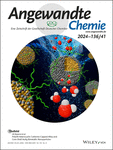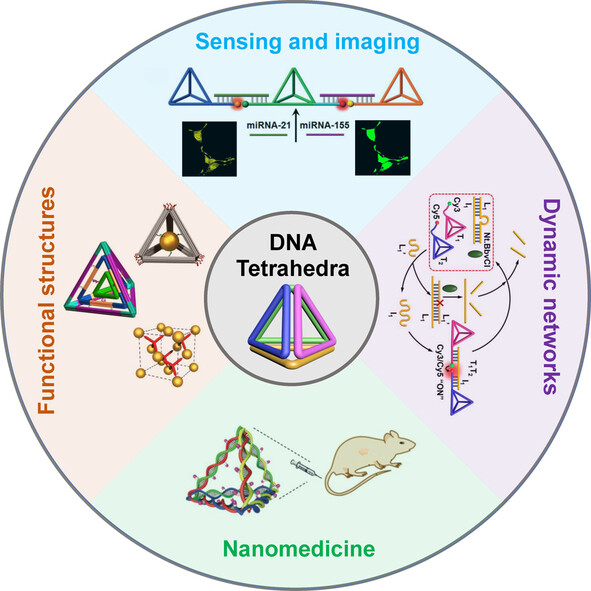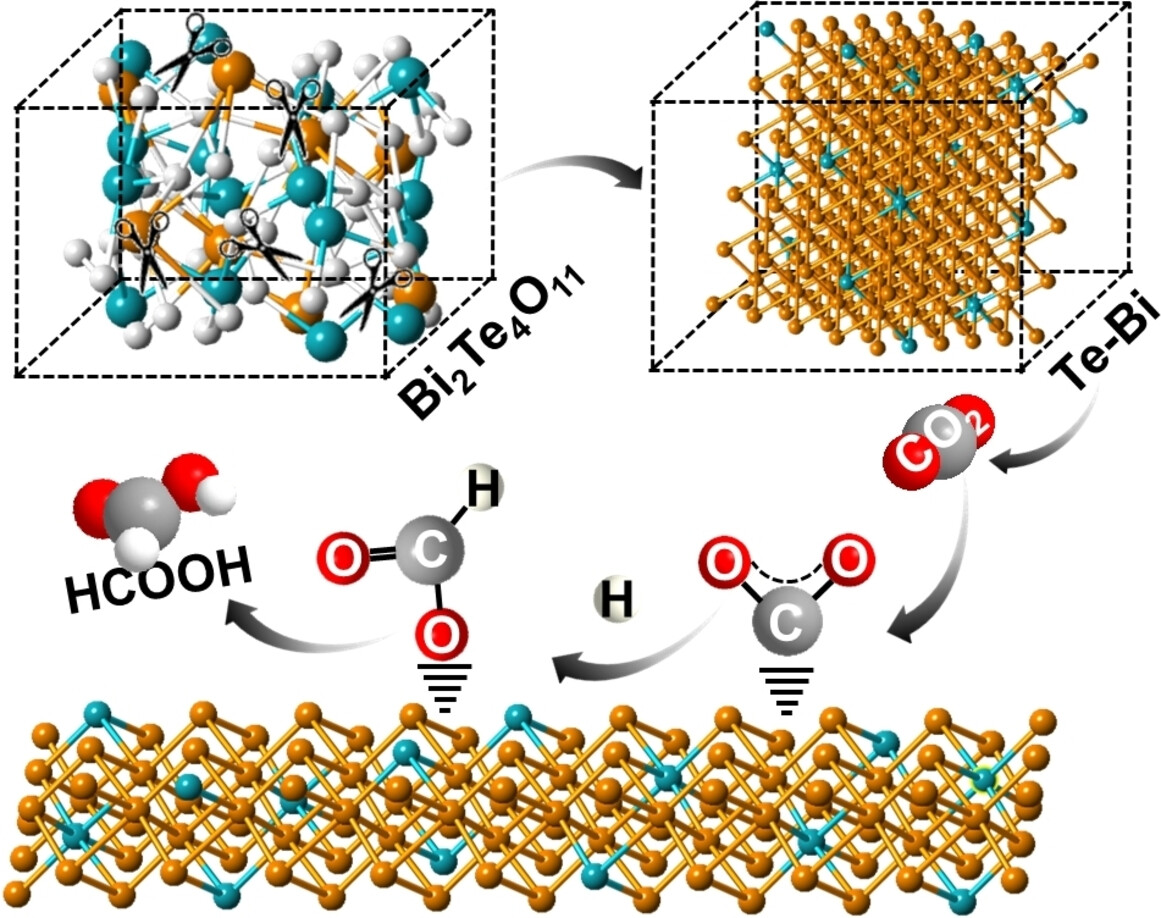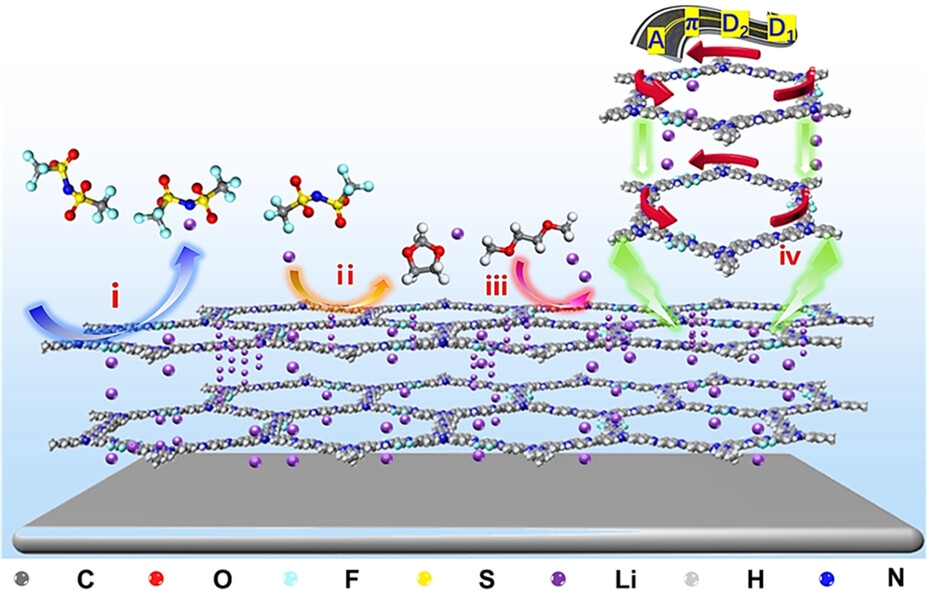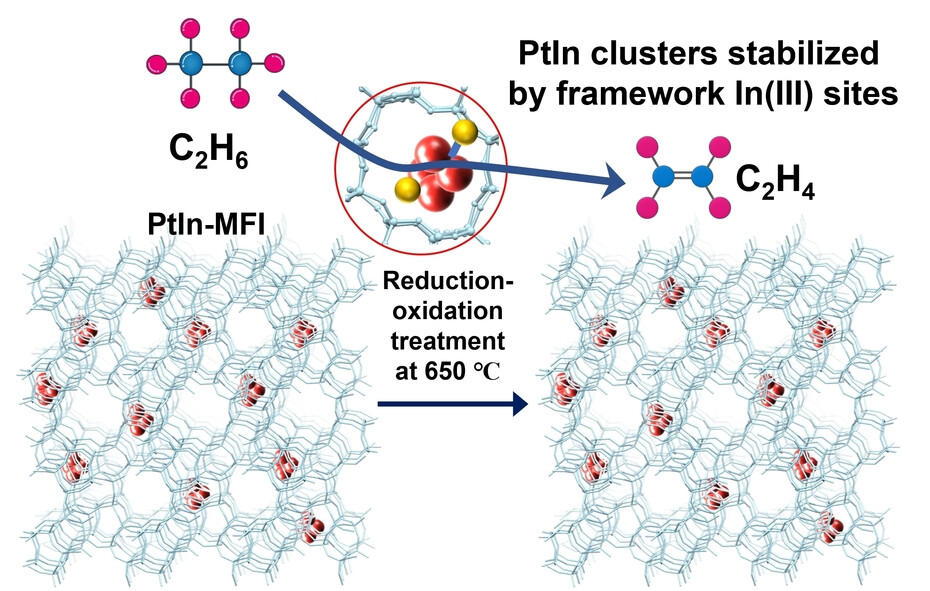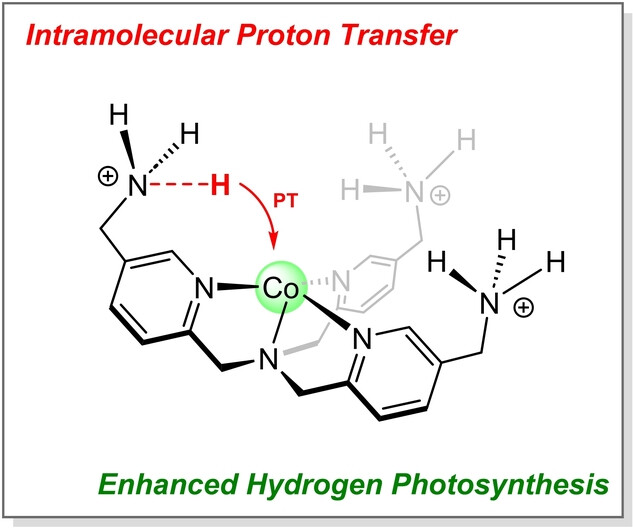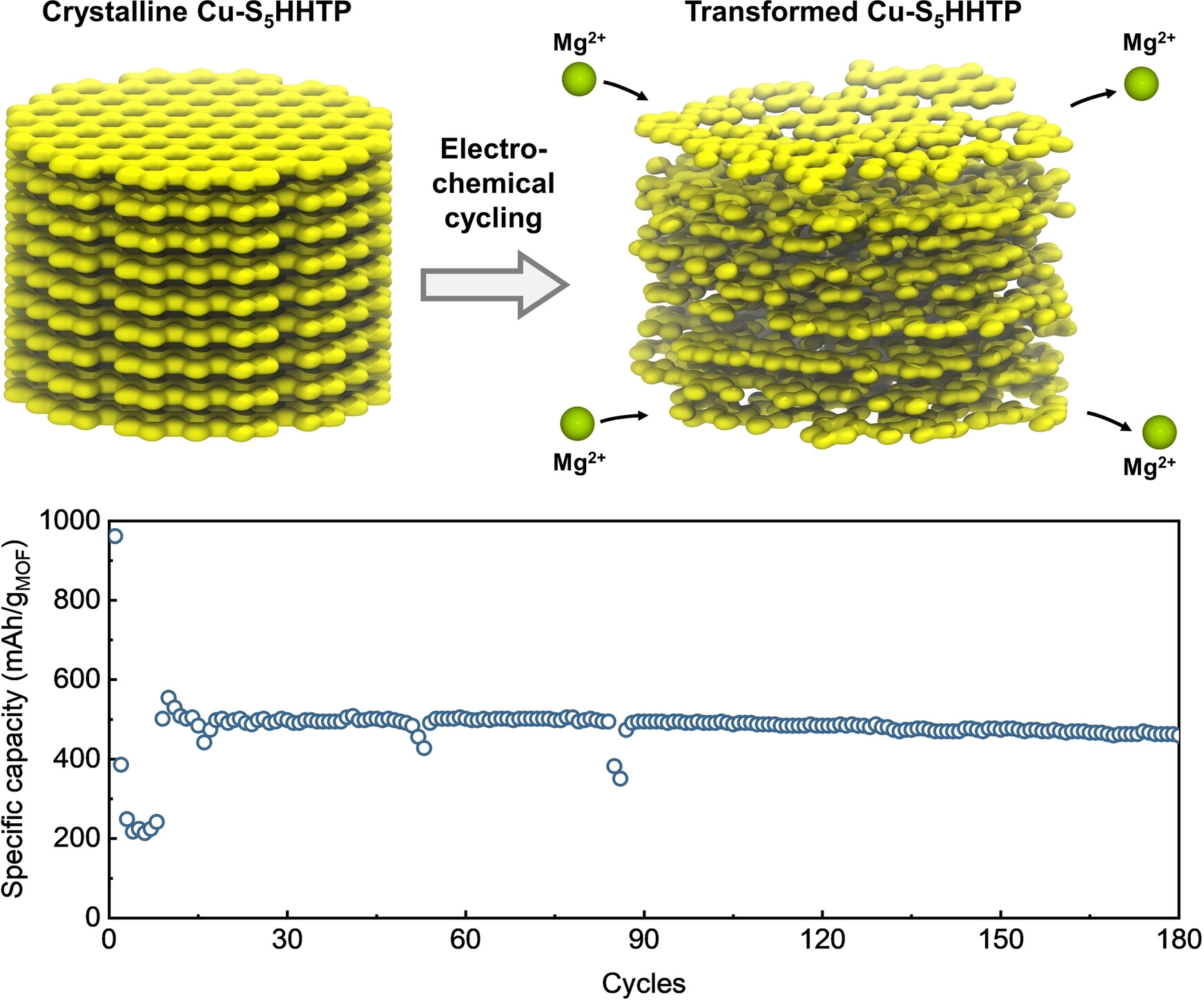Journal list menu
Export Citations
Download PDFs
Cover
Titelbild: Poly(N-Heterocyclic Carbene)-Capped Alloy and Core-Shell AuAg Bimetallic Nanoparticles (Angew. Chem. 41/2024)
- First Published: 06 August 2024
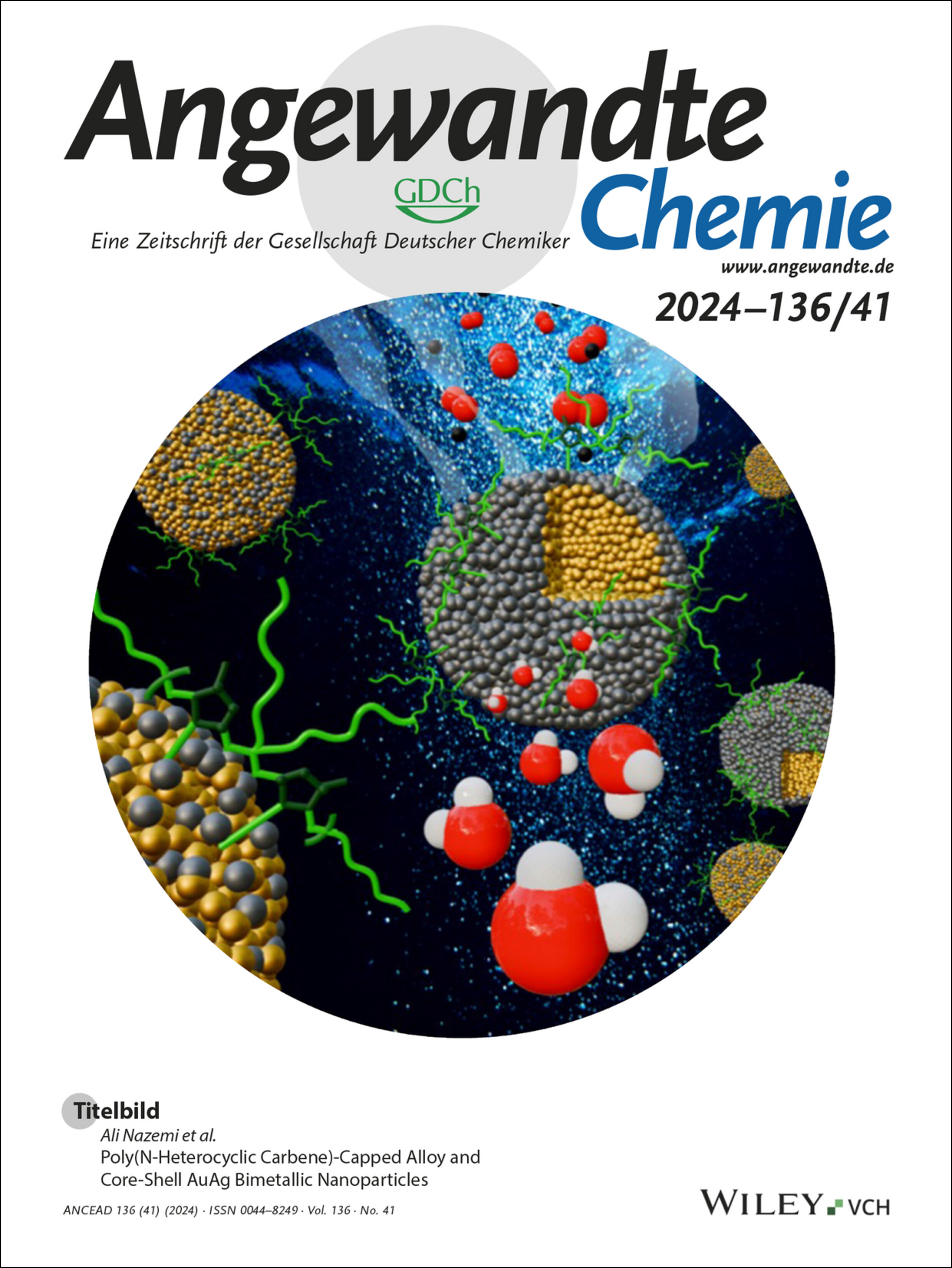
Polymerized N-heterocyclic carbenes (NHCs) are employed to covalently anchor Au and Ag atoms, resulting in bimetallic random copolymers, as reported by Ali Nazemi et al. in their Research Article (e202409800). When these polymers are used as substrates and undergo reduction, they produce polyNHC-capped alloy and core–shell AuAg bimetallic nanoparticles, whose structures are influenced by the proportion of each metal in the metallopolymer. These nanomaterials have been shown to be effective in electrochemical oxygen reduction reaction.
Innentitelbild: Dearomative Construction of 2D/3D Frameworks from Quinolines via Nucleophilic Addition/Borate-Mediated Photocycloaddition (Angew. Chem. 41/2024)
- First Published: 06 August 2024
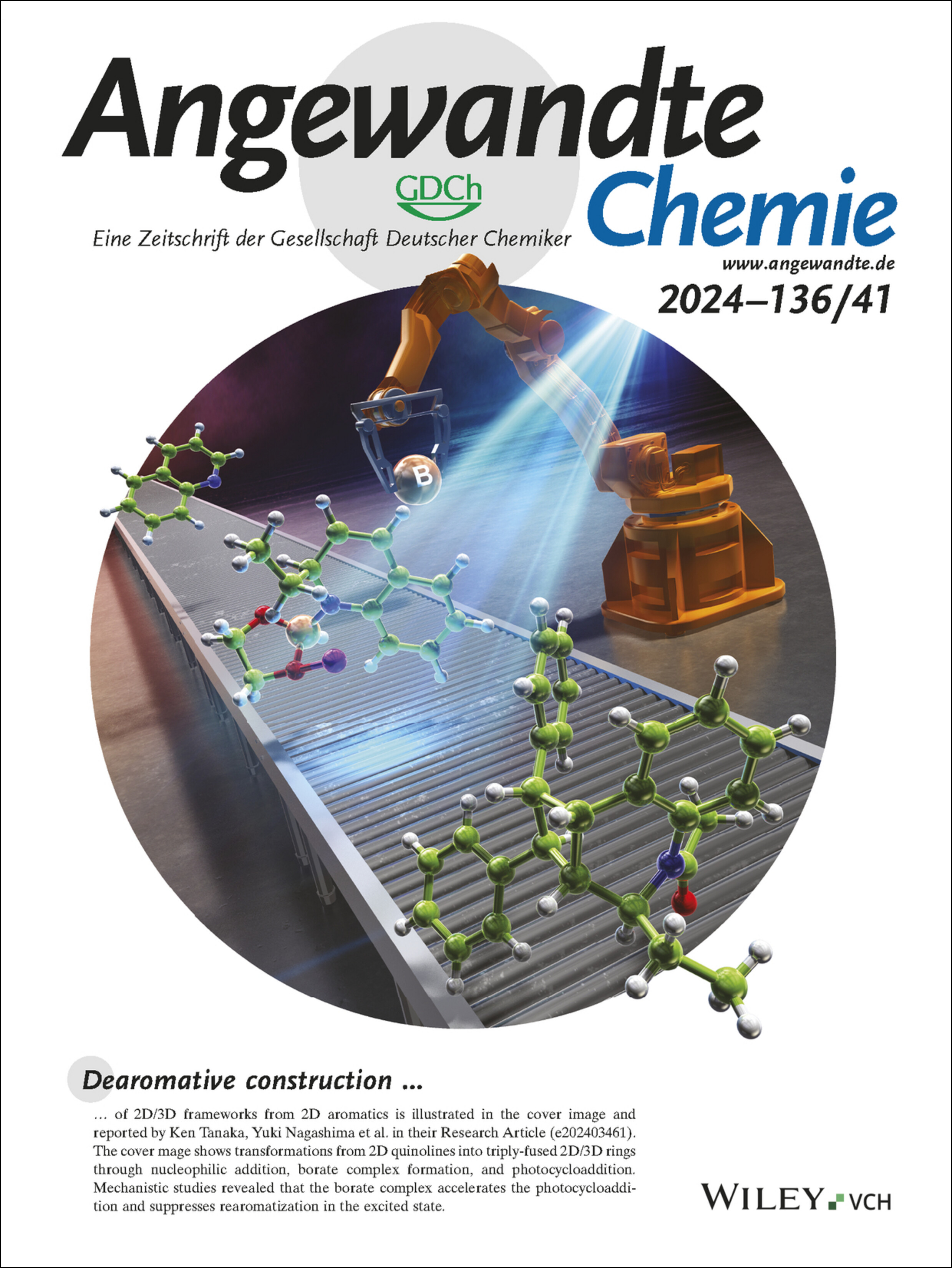
Dearomative construction of 2D/3D frameworks from 2D aromatics is illustrated in the cover image and reported by Ken Tanaka, Yuki Nagashima et al. in their Research Article (e202403461). The cover mage shows transformations from 2D quinolines into triply-fused 2D/3D rings through nucleophilic addition, borate complex formation, and photocycloaddition. Mechanistic studies revealed that the borate complex accelerates the photocycloaddition and suppresses rearomatization in the excited state.
Innenrücktitelbild: Kopplung von Arylchloriden mit Lithium-Nukleophilen, an molekular definierten Alkynyllithium-Palladium-Katalysatoren (Angew. Chem. 41/2024)
- First Published: 01 August 2024
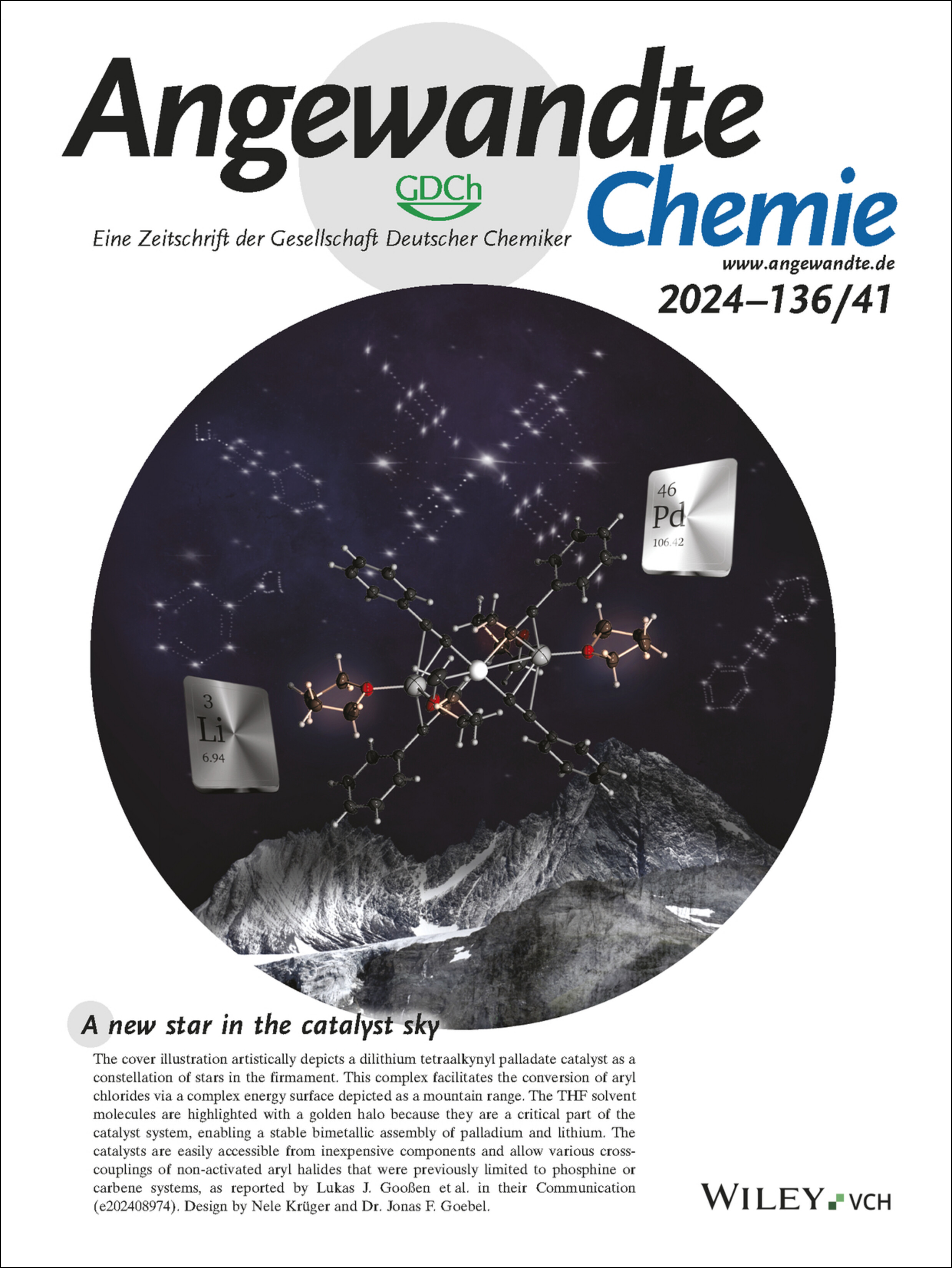
A new star in the catalyst sky The cover illustration artistically depicts a dilithium tetraalkynyl palladate catalyst as a constellation of stars in the firmament. This complex facilitates the conversion of aryl chlorides via a complex energy surface depicted as a mountain range. The THF solvent molecules are highlighted with a golden halo because they are a critical part of the catalyst system, enabling a stable bimetallic assembly of palladium and lithium. The catalysts are easily accessible from inexpensive components and allow various cross-couplings of non-activated aryl halides that were previously limited to phosphine or carbene systems, as reported by Lukas J. Gooßen et al. in their Communication (e202408974). Design by Nele Krüger and Dr. Jonas F. Goebel.
Rücktitelbild: Enhanced Electrical Conductivity of Polyoxometalates by Bridging with Mixed-Valent Multinuclear Platinum Complexes (Angew. Chem. 41/2024)
- First Published: 01 August 2024
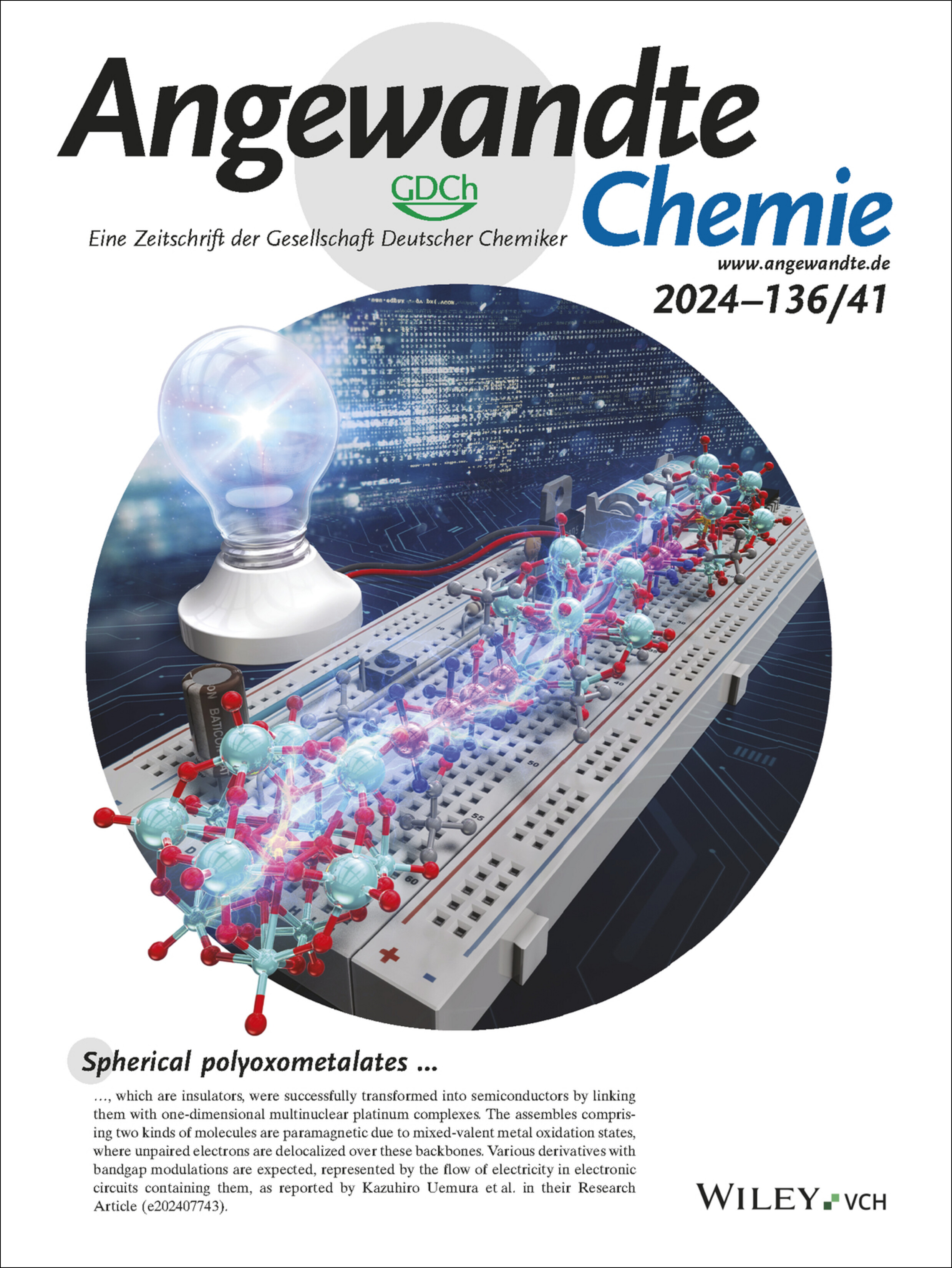
Spherical polyoxometalates , which are insulators, were successfully transformed into semiconductors by linking them with one-dimensional multinuclear platinum complexes. The assembles comprising two kinds of molecules are paramagnetic due to mixed-valent metal oxidation states, where unpaired electrons are delocalized over these backbones. Various derivatives with bandgap modulations are expected, represented by the flow of electricity in electronic circuits containing them, as reported by Kazuhiro Uemura et al. in their Research Article (e202407743).
Frontispiz
Frontispiz: Regulating Zn2+ Migration-Diffusion Behavior by Spontaneous Cascade Optimization Strategy for Long-Life and Low N/P Ratio Zinc Ion Batteries
- First Published: 30 September 2024

Zinc Ion Batteries. Shujiang Ding, Hongyang Zhao et al. propose in their Research Article (e202407194) a spontaneous cascade optimization strategy to achieve a high-performance zinc-ion battery.
Frontispiz: Bismuth as a Z-Type Ligand: an Unsupported Pt−Bi Donor-Acceptor Interaction and its Umpolung by Reaction with H2
- First Published: 30 September 2024
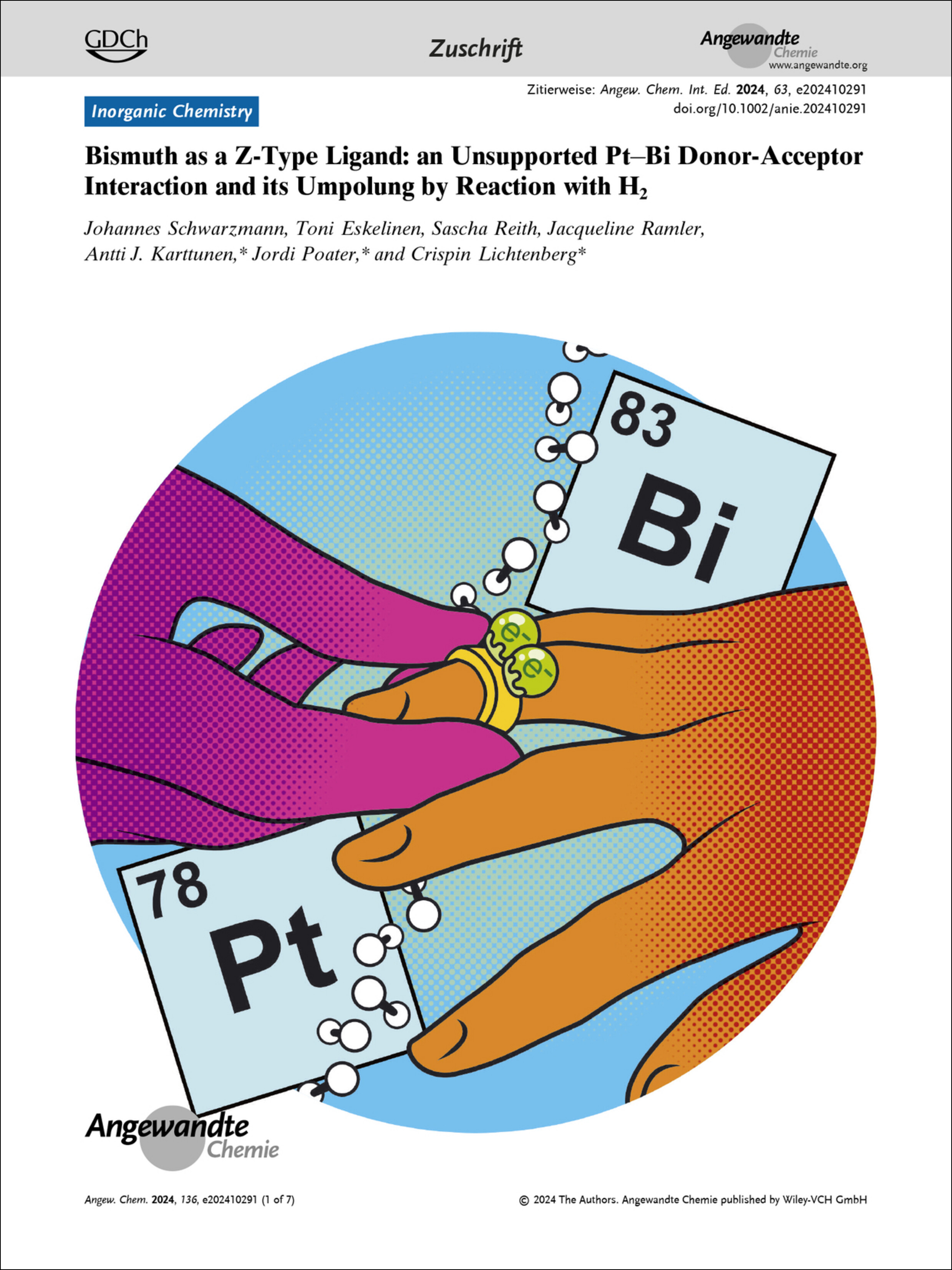
Bimetallic Compounds. An unsupported Pt-Bi donor-acceptor interaction and its umpolung by reaction with H2 is reported by Antti J. Karttunen, Jordi Poater, Crispin Lichtenberg et al in their Communication (e202410291).
Graphisches Inhaltsverzeichnis
Graphisches Inhaltsverzeichnis: Angew. Chem. 41/2024
- First Published: 30 September 2024
THIS ARTICLE HAS BEEN WITHDRAWN
Withdrawal: Steering Sulfur Reduction Pathways via Cisplatin Enables High Performance in Lithium-Sulfur Batteries
- First Published: 30 September 2024
Announcement
Classifieds: Jobs and Awards, Products and Services
- First Published: 30 September 2024
Introducing …
Miriam L. O'Duill
- First Published: 27 August 2024

“If I could have dinner with a historic scientist, I would invite Lise Meitner and we would discuss her work and how much things have changed for women scientists since her time… A turning point in my career was when I stopped working every free hour of the day and consciously prioritized my work-life balance…” Find out more about Miriam L. O'Duill in her Introducing… Profile.
Chidambar Kulkarni
- First Published: 22 August 2024

“A turning point in my career was exploring the molecular design of responsive polymers and macromolecular materials as a postdoctoral scholar… My group has fun by laughing, both in lab and group meeting, as well going on fun outings like group cookouts on the beach…” Find out more about Benjamin McDonald in his Introducing… Profile.
Highlight
Cross-Coupling Reactions
Cost-Effective Carbon Quaternization with Redox-Active Esters and Olefins
- First Published: 09 July 2024
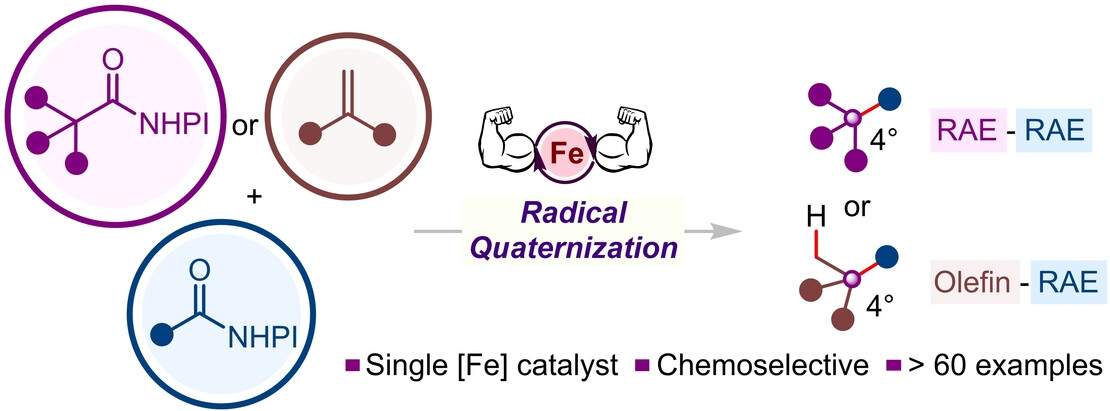
Kawamata, Baran, and Shenvi disclose a solitary iron-catalyzed conceptually distinct platform for constructing quaternary carbons using readily available and structurally diverse redox-active esters (RAEs) and olefins as modular coupling fragments. The heteroselective radical quaternization exhibits appreciable functional group tolerance and enables the synthesis of a palette of quaternary carbon-containing molecules under practical conditions.
Korrespondenz
ESR Spectroscopy
Correspondence on “A Mitochondrion-Localized Two-Photon Photosensitizer Generating Carbon Radicals Against Hypoxic Tumors”
- First Published: 23 January 2024
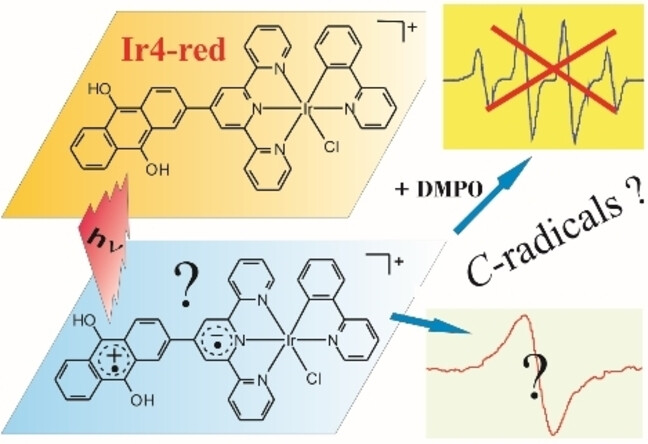
The ESR spectra reported in a Research Article by Chao and co-workers are not in agreement with reactive “carbon radicals” claimed to be produced by 730 nm irradiation of the iridium(III) complex Ir4-red. The observed tumor-damaging effects must be induced by other, unidentified reactive intermediates.
Aufsatz
Organometallic Chemistry
DNA Tetrahedra
DNA Tetrahedra as Functional Nanostructures: From Basic Principles to Applications
- First Published: 22 July 2024
Forschungsartikel
Zinc-Ion Batteries
Regulating Zn2+ Migration-Diffusion Behavior by Spontaneous Cascade Optimization Strategy for Long-Life and Low N/P Ratio Zinc Ion Batteries
- First Published: 31 May 2024
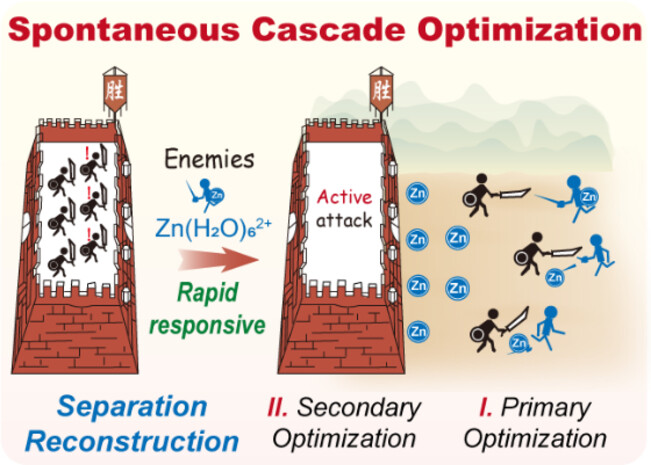
A spontaneous cascade optimization strategy is reported firstly to regulate Zn2+ migration-diffusion behavior. A separation-reconstruction layer is constructed on the Zn anode. The soluble components can be separated into the electrolyte for primary optimization, and the poor-soluble components are reconstructed into flower-like arrays for secondary optimization. This strategy realizes the overall improvement of Zn ion battery performance.
Li Metal Batteries
Enhancing Anion-Selective Catalysis for Stable Lithium Metal Pouch Cells through Charge Separated COF Interlayer
- First Published: 06 September 2024
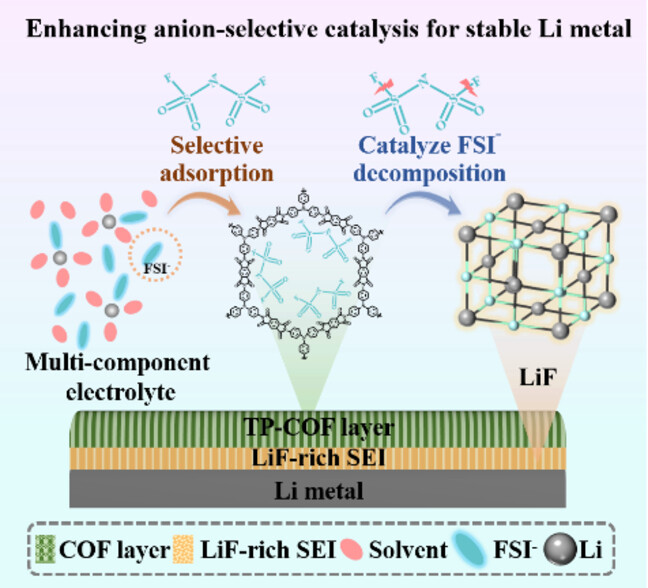
A selective catalysis anionic decomposition strategy for Li metal anode is reported by charge-separated TP-COF. The strong adsorption between TP-COF and FSI− lowers the lowest unoccupied molecular orbital (LUMO) energy level of FSI−, accelerating the decomposition of FSI− and generating a stable LiF-rich SEI. Consequently, dendrite-free lithium deposition and high-energy-density lithium metal batteries were achieved under realistic conditions.
Solid-State Lithium Batteries
Hydrogen-Bonded Organic Frameworks-based Electrolytes with Controllable Hydrogen Bonding Networks for Solid-State Lithium Batteries
- First Published: 21 July 2024
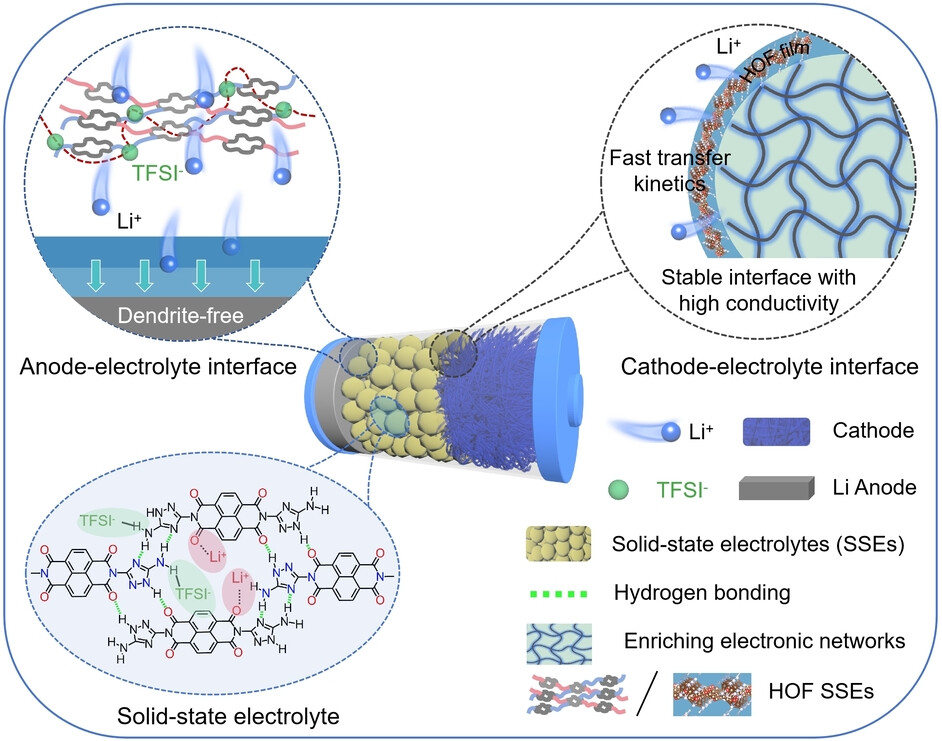
A HOF-based novel solid-state electrolyte was constructed by taking advantage of the abundant multisite hydrogen bonding and stabilizing π–π stacking interactions in HOF-DAT. Benefiting from the abundant C=O groups in the HOF backbone as ion hopping sites and the flexible hydrogen bonding skeleton of LHOF-DAT SSEs, a fast Li+ ion conductivity (2.2×10−4 S cm−1), a high Li+ transference number (0.88), and a wide electrochemical window of 5.05 V were achieved.
Electrocatalysis | Hot Paper
Oxidation of Ammonia Catalyzed by a Molecular Iron Complex: Translating Chemical Catalysis to Mediated Electrocatalysis
- First Published: 09 July 2024
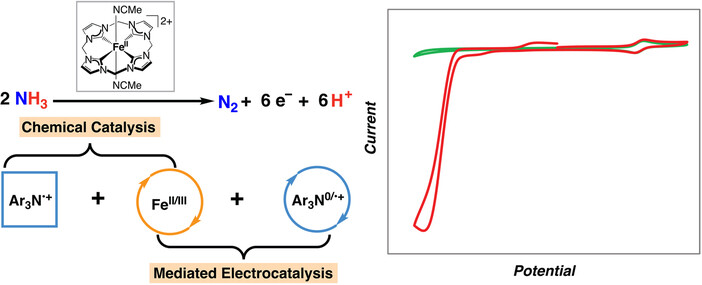
The first example of using a molecular mediator in the catalytic oxidation of ammonia to N2 is reported. An iron electrocatalyst bearing a macrocyclic ligand with four N-heterocyclic carbene (NHC) donors functions at low temperatures (−30 °C) and retains high reactivity even at extremely low loadings (approximately 0.043 mM; 0.004 mol %) of the Fe catalyst.
Lithium Oxygen Batteries
Stable Lithium Oxygen Batteries Enabled by Solvent-diluent Interaction in N,N-dimethylacetamide-based Electrolytes
- First Published: 18 July 2024
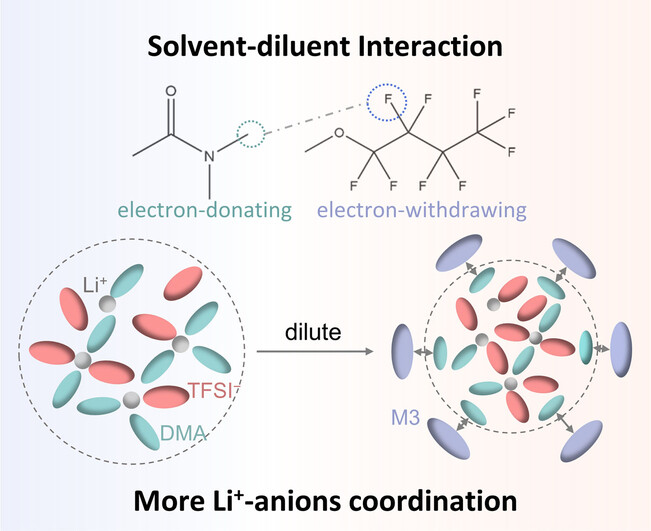
A rationally selected methyl nonafluorobutyl ether (M3) diluent is introduced into the N,N-dimethylacetamide (DMA)-based electrolyte to construct a localized high concentration electrolyte. The interaction between the DMA solvent and M3 diluent increases the coordination number of Li+-anions, facilitating the formation of an anion-derived inorganic-rich solid electrolyte interphase to improve the Li metal stability and consequently realizing stable and high-performance Li−O2 batteries.
Biomass | Hot Paper
Benign and Selective Amination of Lignins towards Aromatic Biobased Building Blocks with Primary Amines
- First Published: 16 July 2024
Photocycloadditions
Dearomative Construction of 2D/3D Frameworks from Quinolines via Nucleophilic Addition/Borate-Mediated Photocycloaddition
- First Published: 27 May 2024
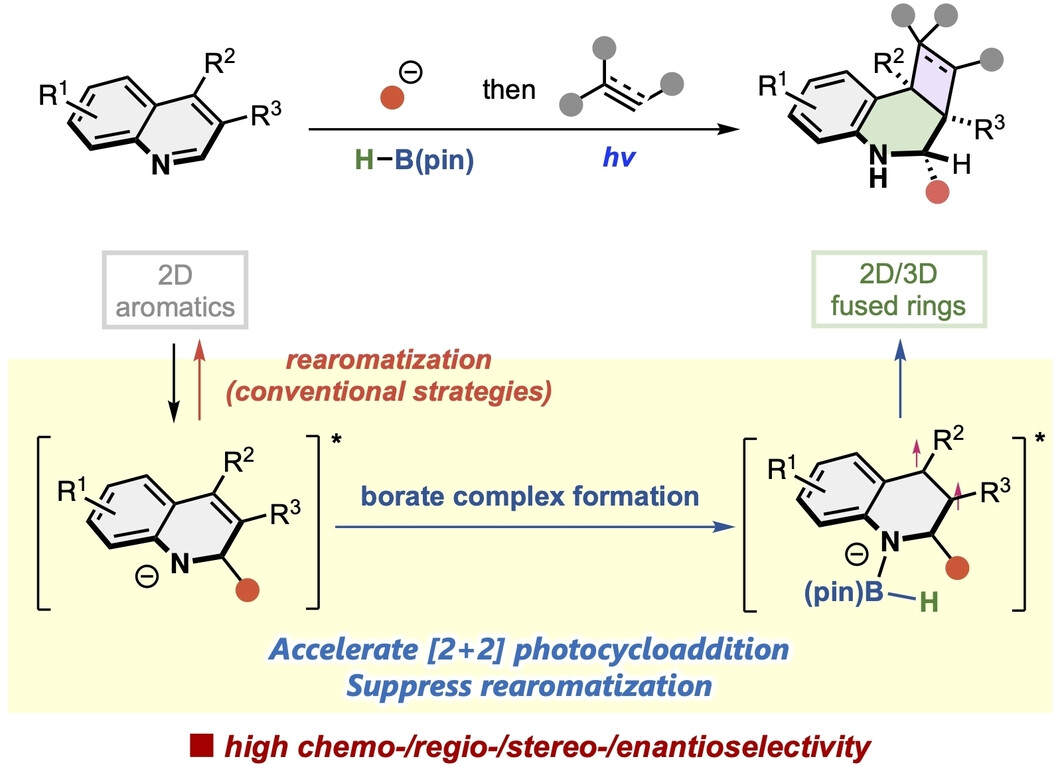
Dearomative construction of triply-fused 2D/3D frameworks was achieved from quinolines via nucleophilic addition and borate-mediated photocycloaddition in a chemo-, regio-, diastereo-, and enantioselective manner. The borate complex accelerates the photocycloaddition and suppresses rearomatization in the excited state. Based on mechanistic analysis, further photoinduced cycloadditions affording other types of 2D/3D frameworks from isoquinoline and phenanthrene are also developed.
Li-Ion Batteries
Revisiting the Electrochemical Impedance Spectroscopy of Porous Electrodes in Li-ion Batteries by Employing Reference Electrode
- First Published: 09 July 2024
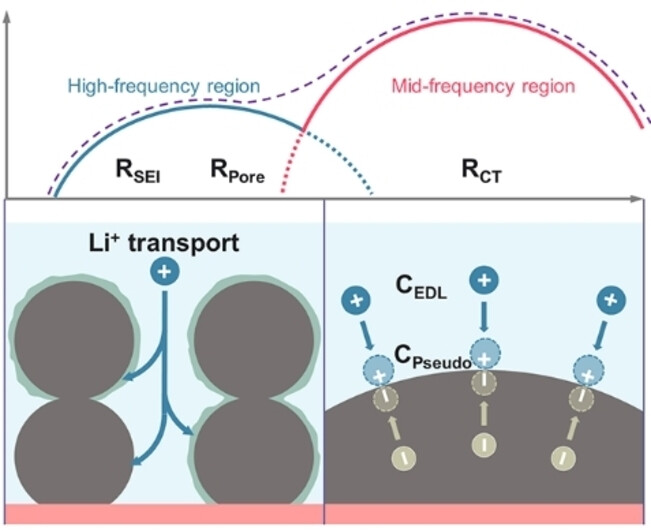
Electrochemical impedance spectroscopy interpretation is essential for comprehending the electrochemical processes in porous electrodes. This work demonstrates that the high-frequency impedance arc is attributed to the ion transport resistance in pore channels and solid electrolyte interphase, while the mid-frequency capacitive behavior results from a series connection of electrical double layer capacitance and pseudo-capacitance.
Batteries | Very Important Paper
Manipulating Atomic-Coupling in Dual-Cavity Boride Nanoreactor to Achieve Hierarchical Catalytic Engineering for Sulfur Cathode
- First Published: 27 May 2024
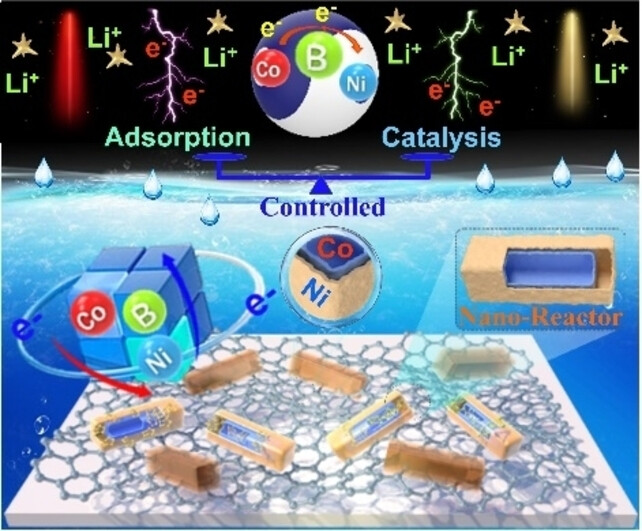
The unique cascaded dual-cavity boride nanoreactor is rationally designed as a sulfur host, which achieves controlled catalysis in the heterogeneous catalytic system of lithium-sulfur batteries. The coupling between atoms regulates catalyst activity and suppresses Li2S passivation. The mechanism and application investigation of nanoreactor provides a guiding strategy for lithium-sulfur batteries.
CO2 Hydrogenation | Very Important Paper
Steam-Assisted Selective CO2 Hydrogenation to Ethanol over Ru−In Catalysts
- First Published: 11 July 2024
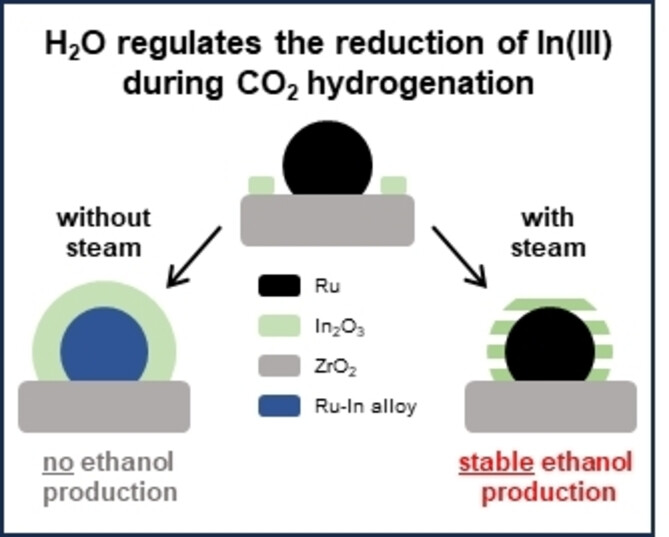
Ru/In2O3-ZrO2 was found to be active for ethanol production from CO2 hydrogenation, but ethanol productivity decreased substantially after several hours of reaction due to the excessive reduction of In species. With the addition of steam as a mild oxidant and using porous polymer layers to control In mobility, Ru−In2O3 interface sites were stabilized, and ethanol could be produced with superior overall selectivity (70 %, rest CO).
Electrocatalysis | Hot Paper
The Role of Phosphorus on Alkaline Hydrogen Oxidation Electrocatalysis for Ruthenium Phosphides
- First Published: 15 July 2024
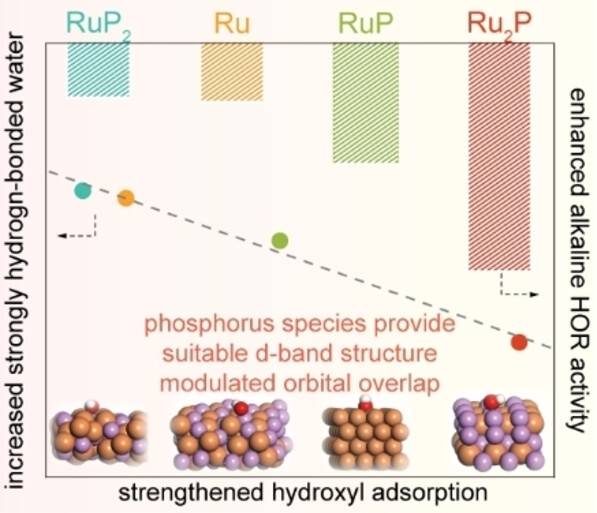
The alkaline HOR performance of ruthenium-based phosphides were explored to investigate the catalytic role of phosphorus. P-species induced orbital overlap and d-band structure regulation would optimally enhance the hydroxyl binding energy under moderate P-content, which increase the proportion of strongly hydrogen-bonded water with improved connectivity of hydrogen-bond network and subsequently boost the HOR kinetics.
DNA Computation
DNA Logical Computing on a Transistor for Cancer Molecular Diagnosis
- First Published: 21 July 2024
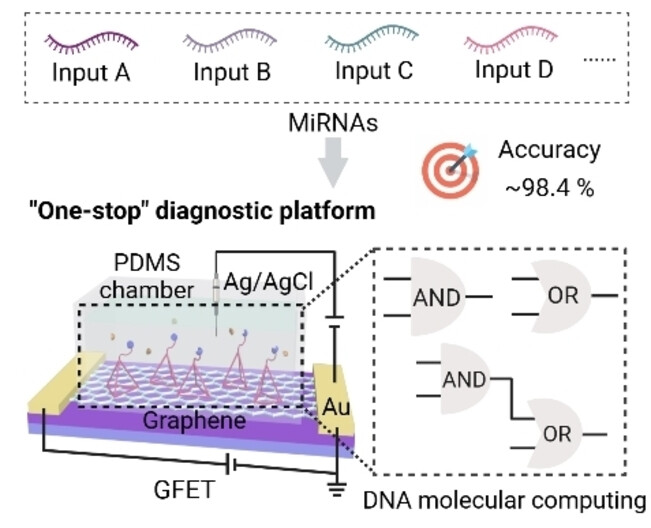
A transistor-based DNA molecular computing platform that is capable of simultaneously detecting multiple microRNAs and rapidly providing diagnostic results through built-in logic computing. The platform enables both accurate and efficient diagnosis of cancers, showing great potential in precision medicine and personalized therapy.
Batteries
Enabling Efficient Anchoring-Conversion Interface by Fabricating Double-Layer Functionalized Separator for Suppressing Shuttle Effect
- First Published: 14 July 2024

A novel double-layer strategy to functionalize separators is proposed, where Co/CoN4 layer serves as adsorption-catalytic centers for high-order and low-order LiPSs, combined with 2D MXene layer that acts as the second barrier for additional leaked LiPSs, and thus a circulation interface of adsorption-conversion-reactivation of S species has been realized, effectively alleviating the shuttle effect in lithium-sulfur/selenium batteries.
Fluorescent Probes
Development of a Fluorescent Probe with High Selectivity based on Thiol-ene Click Nucleophilic Cascade Reactions for Delving into the Action Mechanism of Serotonin in Depression
- First Published: 12 July 2024
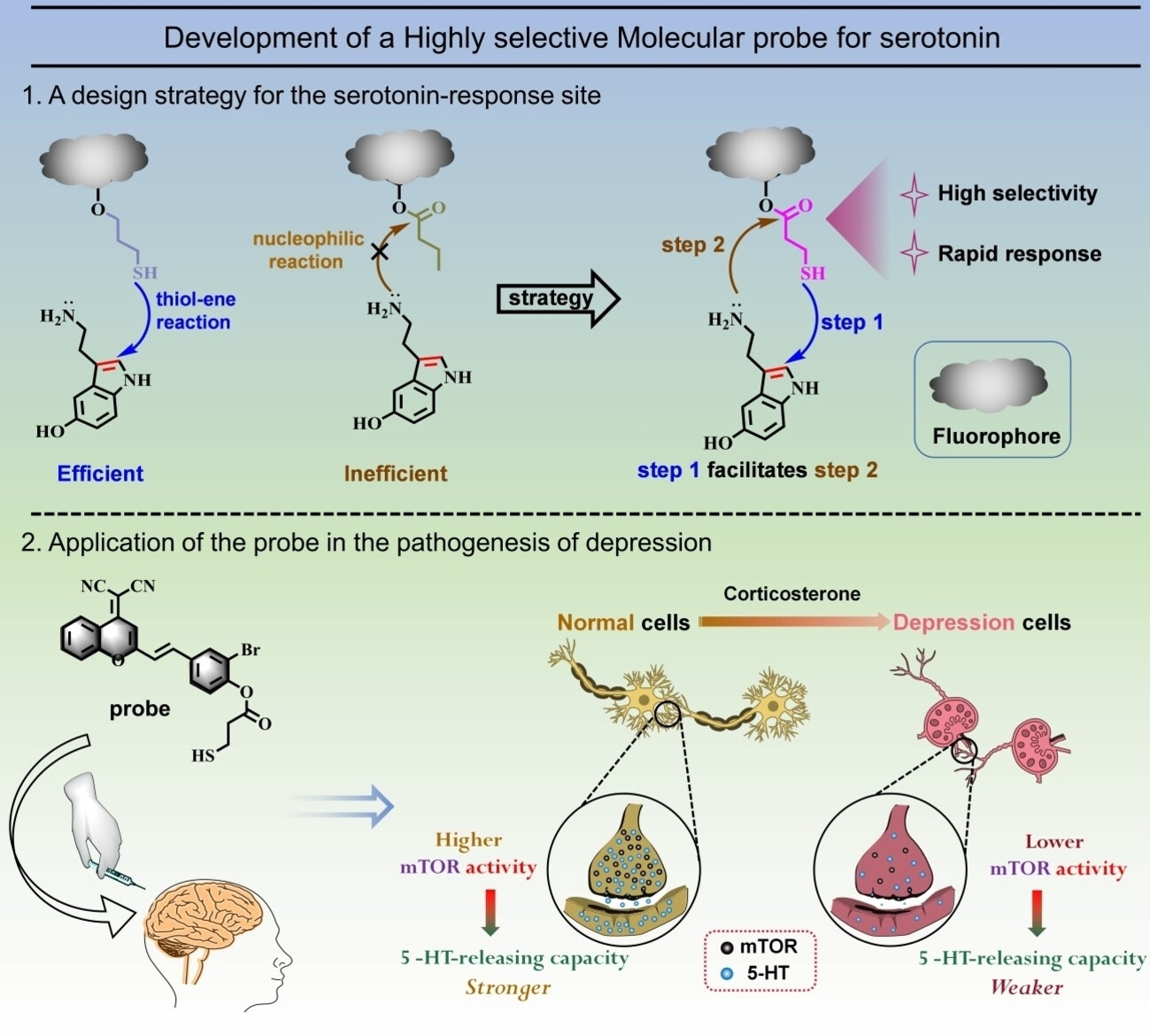
How to achieve rapid and accurate detection of serotonin in organisms is a key question in studying the pathogenesis of psychiatric disorders such as depression. To study the action mechanism of serotonin, we have developed a highly selective molecular probe based on thiol-ene click cascade nucleophilic reactions that enables real-time imaging of brain tissues in depression.
CO2 Reduction | Hot Paper
Tensile-Strained Cu Penetration Electrode Boosts Asymmetric C−C Coupling for Ampere-Level CO2-to-C2+ Reduction in Acid
- First Published: 15 July 2024
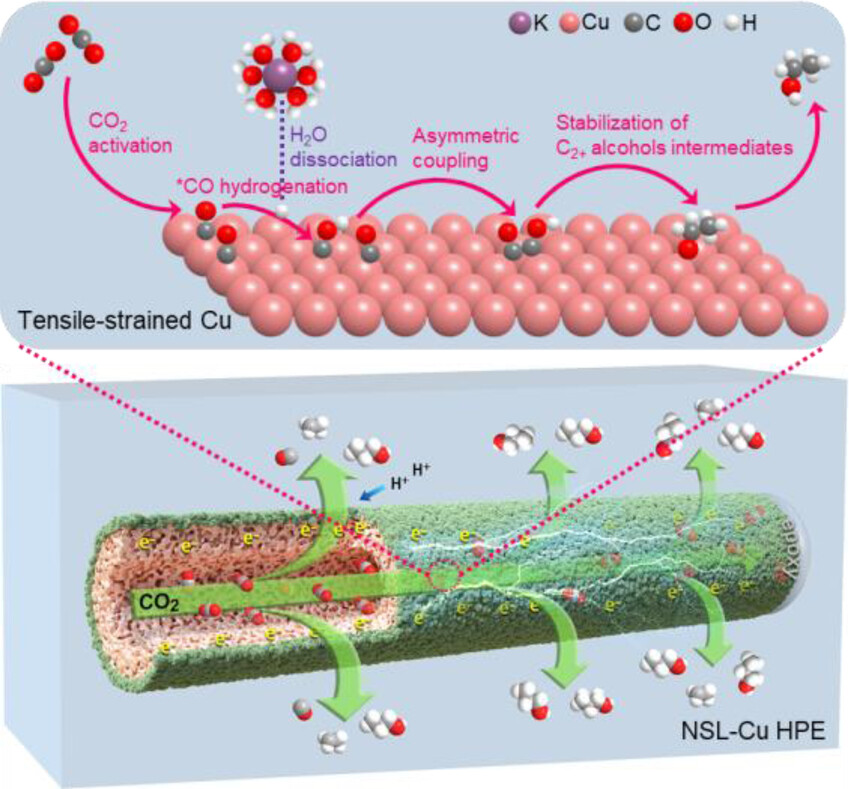
Tensile-strained copper hollow-fiber penetration electrode (Cu HPE) enhances the asymmetric C−C coupling to steer the selectivity and activity of multicarbon (C2+) products. A faradaic efficiency of 84.5 % and a partial current density as high as 3.1 A cm−2 for C2+ products, alongside a single-pass carbon efficiency of 81.5 % and stable electrolysis for 240 h were demonstrated in a strong acidic electrolyte (pH=1).
Spin Dynamics | Hot Paper
Enhanced Electrical Conductivity of Polyoxometalates by Bridging with Mixed-Valent Multinuclear Platinum Complexes
- First Published: 25 June 2024
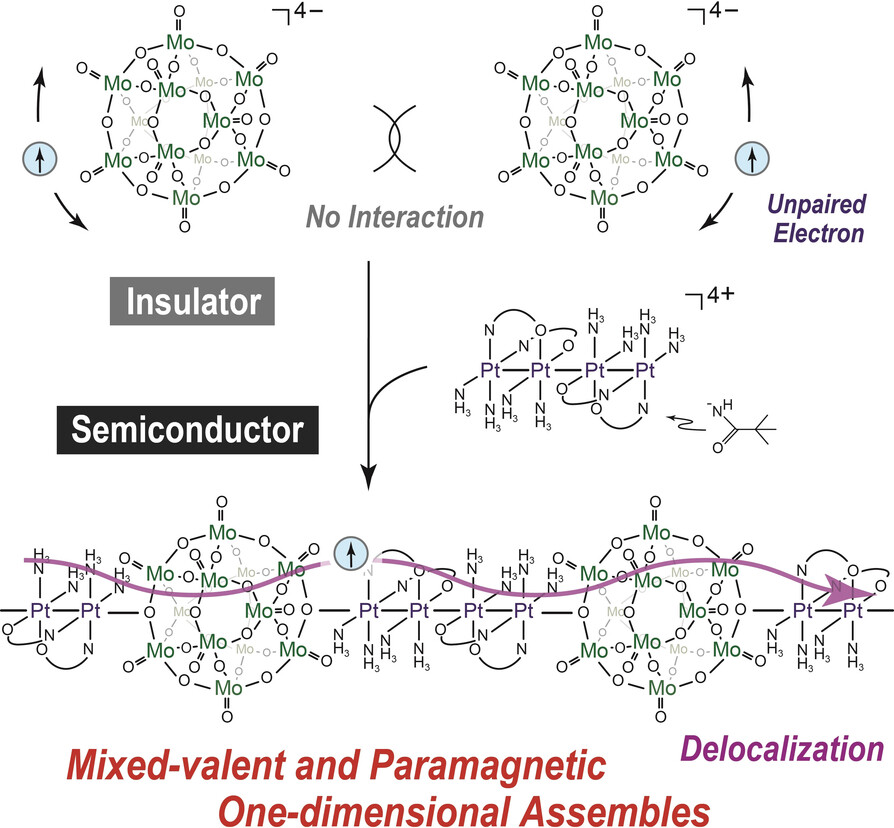
Three paramagnetic one-dimensional assembles were successfully obtained from spherical polyoxometalates and multinuclear platinum complexes. Each assemble has mixed-valent metal oxidation states and unpaired electrons on metal d orbitals, showing semiconducting behaviours, which was 105 times greater than that of the parent polyoxometalates.
Photochemistry
Light-Induced Unlocking Reactivity of Fragments for Fast Target-Guided Synthesis of Carbonic Anhydrase Inhibitors
- First Published: 14 July 2024
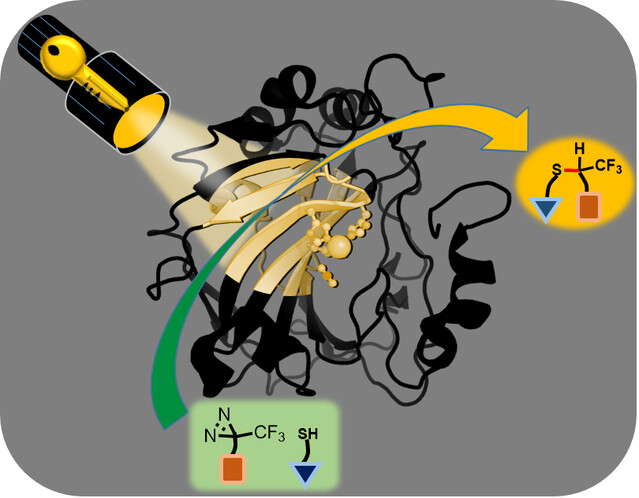
By integrating photochemistry within kinetic target-guided synthesis (KTGS) techniques, we significantly accelerated the identification of enzyme inhibitors, demonstrating the potential of KTGS for rapid discovery of bioactive ligands in medicinal chemistry. The chiral linkage gives rise to the formation of enantiomers, which were assessed via a highly stereocontrolled synthesis of both templated ligand enantiomers.
Zn-Ion Batteries
In-Situ Solid Electrolyte Interface via Dual Reaction Strategy for Highly Reversible Zinc Anode
- First Published: 12 July 2024
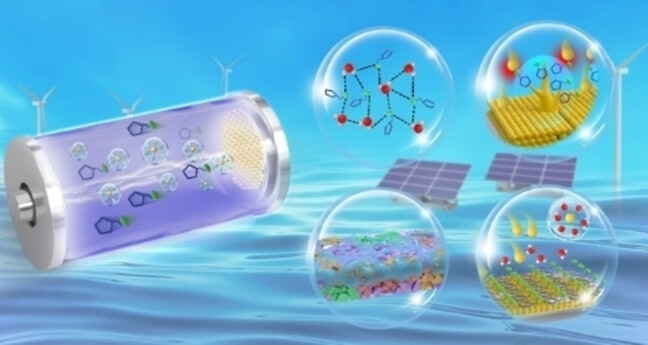
Ultrathin layered solid electrolyte interface (SEI) is in situ constructed by dual reaction strategy, which synergistically utilizes spontaneous electrostatic reaction and electrochemical decomposition via introducing the functional additive CMIM (1-carboxymethyl-3-methylimidazolium chloride). CMIM′s unique molecular structure also enables the disruption of hydrogen bonding, guides uniform Zn2+ deposition, and promotes rapid ion transfer to enhance battery stability, thus affording highly reversible queous zinc-ion batteries.
Photocatalysis
Photocatalytic Multisite Functionalization of Unactivated Terminal Alkenes by Merging Polar Cycloaddition and Radical Ring-Opening Process
- First Published: 17 July 2024

A novel 1,2,5-trifunctionalization of unactivated alkenes is established by merging dipolar cycloaddition with photoredox promoted radical ring-opening remote C(sp3)−H functionalization. This transformation was triggered by XAT followed by a cascade of 1,5-HAT and intermolecular fluorine atom transfer. With this method, a broad spectrum of valuable β-hydroxyl-ϵ-fluoro-nitrile products are synthesized from readily available terminal alkenes.
Electrosynthesis | Very Important Paper
Ligand-Hybridization Activates Lattice-Hydroxyl-Groups of NiCo(OH)x Nanowires for Efficient Electrosynthesis
- First Published: 12 July 2024
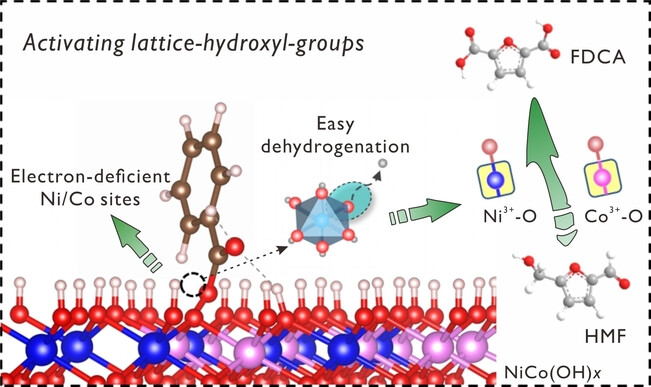
This work offers a concept for enhancing the electrochemical activation and dehydrogenation of lattice-hydroxyl-groups (M2+−O−H⇌M3+−O) to produce high-valence Ni3+/Co3+ active sites for 5-hydroxymethylfurfural oxidation reaction. Notably, the dehydrogenation process is significantly augmented due to the electron-deficient Ni/Co sites and weakened O−H bond strength derived from the robust electron-withdrawing capability of benzoic acid ligands.
Femtosecond Infrared Spectroscopy | Very Important Paper
From Ultrafast Photoinduced Small Polarons to Cooperative and Macroscopic Charge-Transfer Phase Transition
- First Published: 09 July 2024
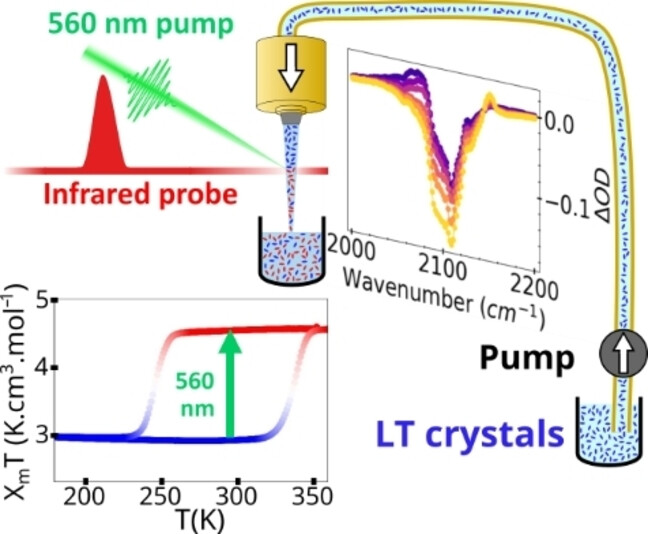
Femtosecond infrared spectroscopy is used to study the out-of-equilibrium dynamics of the ultrafast and persistent photoinduced phase transition of the Rb0.94Mn0.94Co0.06[Fe(CN)6]0.98 ⋅ 0.2H2O material, induced at room temperature. The data show that optical excitation creates small CT polarons within 250 fs. Above threshold excitation, a cooperative and macroscopic phase transition occurs on the 100 ps timescale.
Mechanochemistry
Solvent Minimized Synthesis of Amides by Reactive Extrusion
- First Published: 09 September 2024
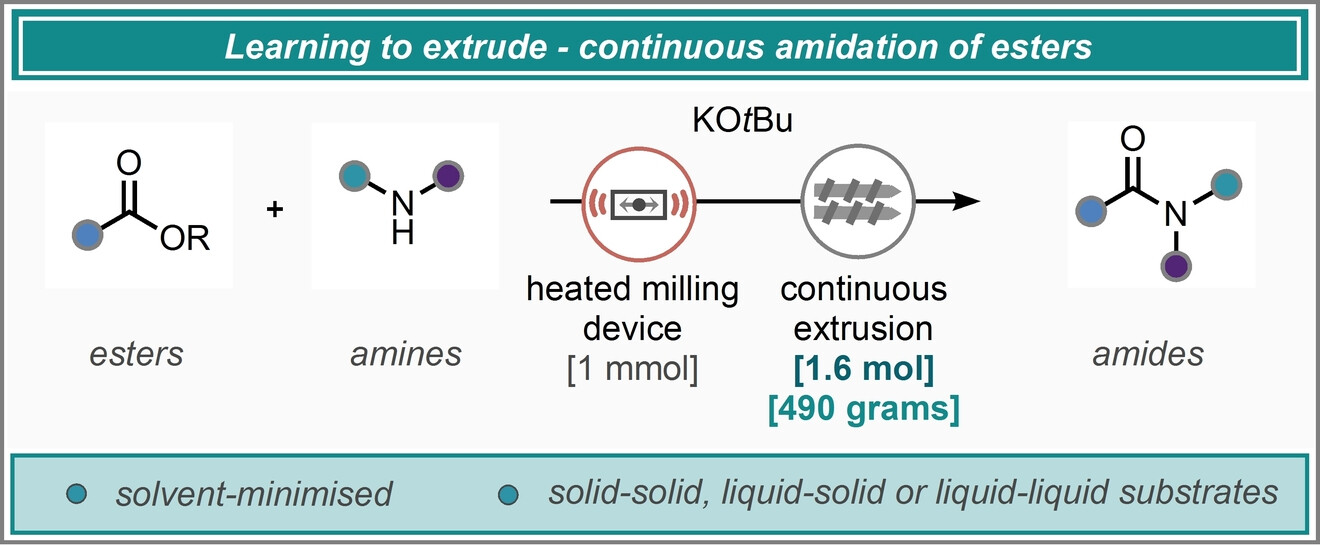
The direct amidation of esters is converted from a ball-milled process into a continuous solvent-minimised reactive extrusion protocol capable of delivering 500 grams (1.3 mols) of amide product over a continuous operation for 7 hours. Key to this, was translation of heating profiles used for the ball-milling study directly to the extruder and consideration of the physical form of input substrates.
Perovskites
3D Lead-Organoselenide-Halide Perovskites and their Mixed-Chalcogenide and Mixed-Halide Alloys
- First Published: 08 July 2024
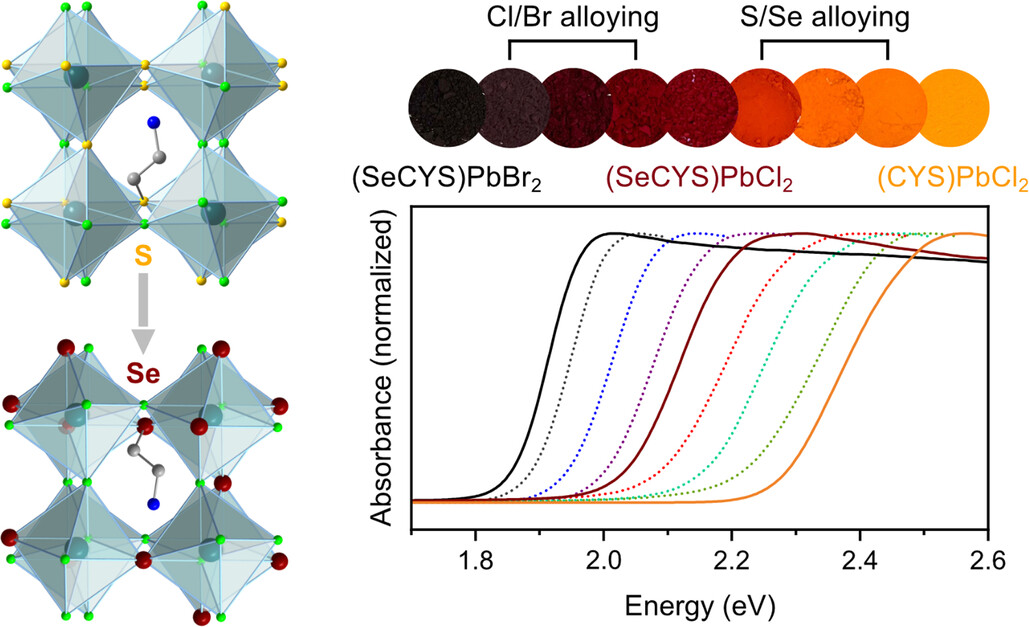
Selenium is introduced into the halide perovskite framework, for the first time, using the zwitterionic selenocysteamine. The average and local structures of these mixed-anion perovskites help determine the band structures and potential trap states, respectively. Calculations show dispersive bands and direct gaps, which can be further tuned to straddle the ideal values for tandem solar cells using halide alloying and chalcogenide alloying.
Posttranslational Modifications | Very Important Paper
A Chemoselective Enrichment Strategy for In-Depth Coverage of the Methyllysine Proteome
- First Published: 16 July 2024
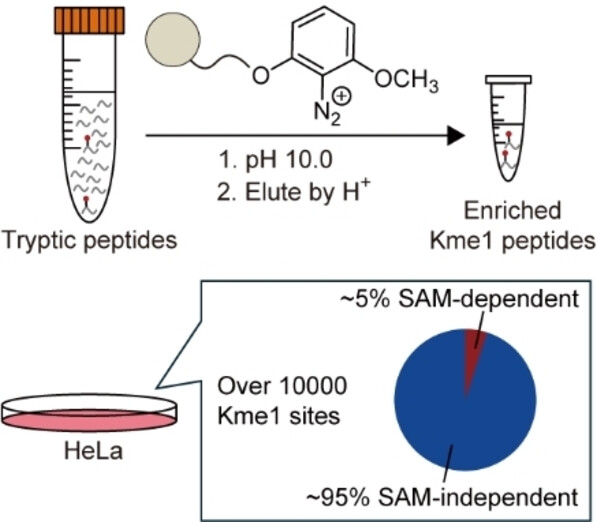
To investigate lysine methylation comprehensively, a robust method for Kme1 enrichment was established. Dimethoxyaryl diazonium crosslinked Kme1 with high reactivity and selectivity among tryptic peptides from cell samples. As a result, over 10000 Kme1 sites were identified by proteomic analysis. Furthermore, we found a significant amount of methyl marks that were not S-adenosyl methionine-dependent by isotope labeling experiments.
Phototherapy
Targeting Mitochondrial Guanine Quadruplexes for Photoactivatable Chemotherapy in Hypoxic Environments
- First Published: 16 July 2024

We report an oxygen independent photoactivatable chemotherapeutic, Ru-TAP-PDC3, that targets mitochondrial guanine quadruplexes. Photoirradiation induces depletion of mitochondrial DNA and mitochondrial dysfunction causing cell death by triggering apoptosis. Importantly, Ru-TAP-PDC3 is negligibly toxic under dark conditions but upon irradiation, significant toxicity is observed.
Biomimetic Polyelectrolytes | Hot Paper
Ion-Specific Interactions Engender Dynamic and Tailorable Properties in Biomimetic Cationic Polyelectrolytes
- First Published: 09 July 2024

Structural biomaterials such as spider silk and mussel byssi are fabricated by the chemoresponsive phase separation of biomacromolecules. Inspired by these biofabrication schemes, this work demonstrates that ion-specific interactions between cationic polyelectrolytes and ionic cosolutes offers new opportunities to control the assembly, structure, and dynamic physical properties of soft matter.
Lithium Metal Batteries
Butadiene Sulfone Based Binary Deep Eutectic Electrolyte for High Performance Lithium Metal Batteries
- First Published: 15 July 2024
Superacids
First Main-Group Element Lewis Acid Thionyl Chloride Adduct and its Chemistry
- First Published: 14 July 2024

We report on the synthesis, characterization and reactivity of adducts of tris(pentafluoroethyl)gallium and -indium, M(C2F5)3 (M=Ga, In) with weak donor molecules, particularly of the first structurally characterized thionyl chloride adduct of a main group element Lewis acid. [Ga(C2F5)3(SOCl2)] is accessible by dehydration of [Ga(C2F5)3(OH2)2] with thionyl chloride.
Photochemistry
Red-Light Triggered H-Abstraction Photoinitiators for the Efficient Oxygen-Independent Therapy of Hypoxic Tumors
- First Published: 03 July 2024
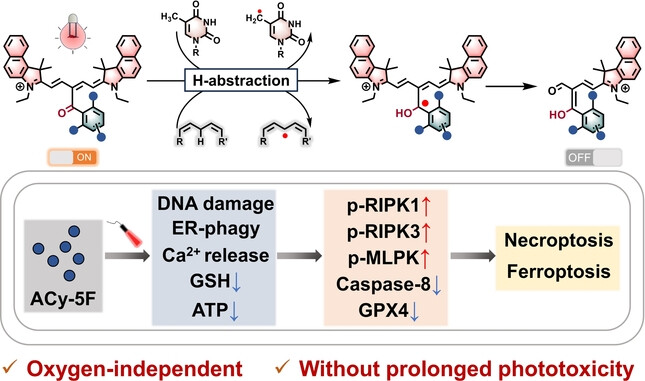
This study presents the first red-light triggered H-abstraction photoinitiators for hypoxic cancer photodynamic therapy. The photoinitiator can initiate red-light-induced H-abstraction with intracellular biomolecules to induce necroptosis and ferroptosis. Moreover, photoinitiator was degraded following H-abstraction, avoiding the long-term phototoxicity. This study provides a crucial molecular strategy for hypoxic tumor therapy.
Photocatalytic Hydrogen Peroxide
Integrating Multipolar Structures and Carboxyl Groups in sp2-Carbon Conjugated Covalent Organic Frameworks for Overall Photocatalytic Hydrogen Peroxide Production
- First Published: 22 July 2024
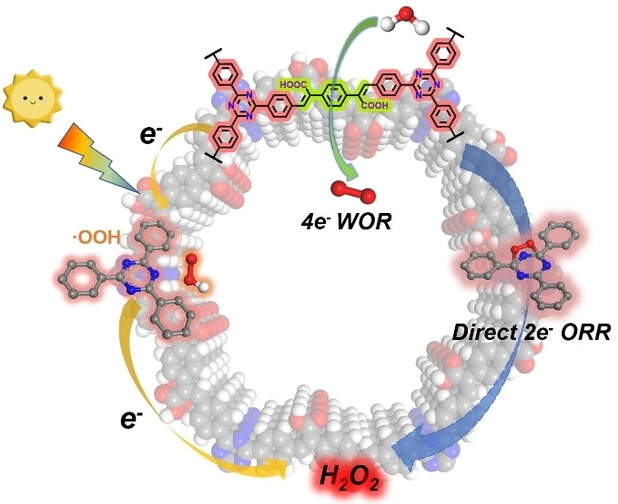
A series of fully conjugated sp2-c covalent organic framework integrated with multipolar structures and enrichment sites have been prepared for overall photosynthesis of H2O2. Benefiting from optimal multipolar structures and functional sites, TACOF-1-COOH facilitated charge transfer and mass movement during the photocatalysis process, leading to highly efficient ORR performance with a H2O2 production rate of 3542 μmol g−1 h−1.
Electrochemical CO2 Reduction
The Reconstruction of Bi2Te4O11 Nanorods for Efficient and pH-universal Electrochemical CO2 Reduction
- First Published: 12 July 2024
Photocatalysis
Hydrogen Bonds and In situ Photoinduced Metallic Bi0/Ni0 Accelerating Z-Scheme Charge Transfer of BiOBr@NiFe-LDH for Highly Efficient Photocatalysis
- First Published: 07 July 2024
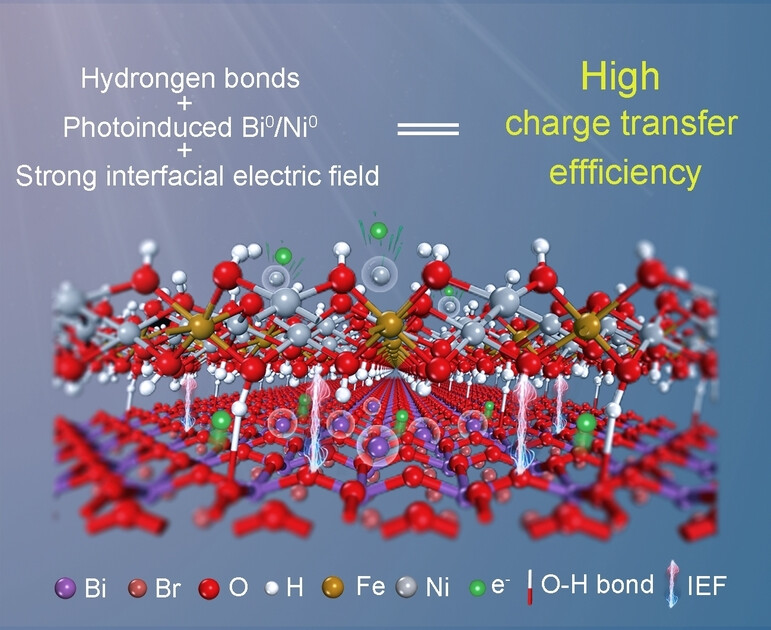
Hydrogen bonding 2D/2D Z-scheme junction BiOBr@NiFe-LDH with stable interface and abundant atomic-level charge transfer channels is fabricated. Bi0 and Ni0 in situ formed at the interface and surface of LDH separately act as electron mediator and electron extractor to facilitate the charge migration. The system exhibits a high charge transfer efficiency up to 71.2 %, nearly 10-fold than the BiOBr, optimizing the efficiency of photocatalytic activation of PMS for tetracycline degradation.
Photoactivatable Antibiotics
Light-Activated Nanocatalyst for Precise In-Situ Antimicrobial Synthesis via Photoredox-Catalytic Click Reaction
- First Published: 16 July 2024
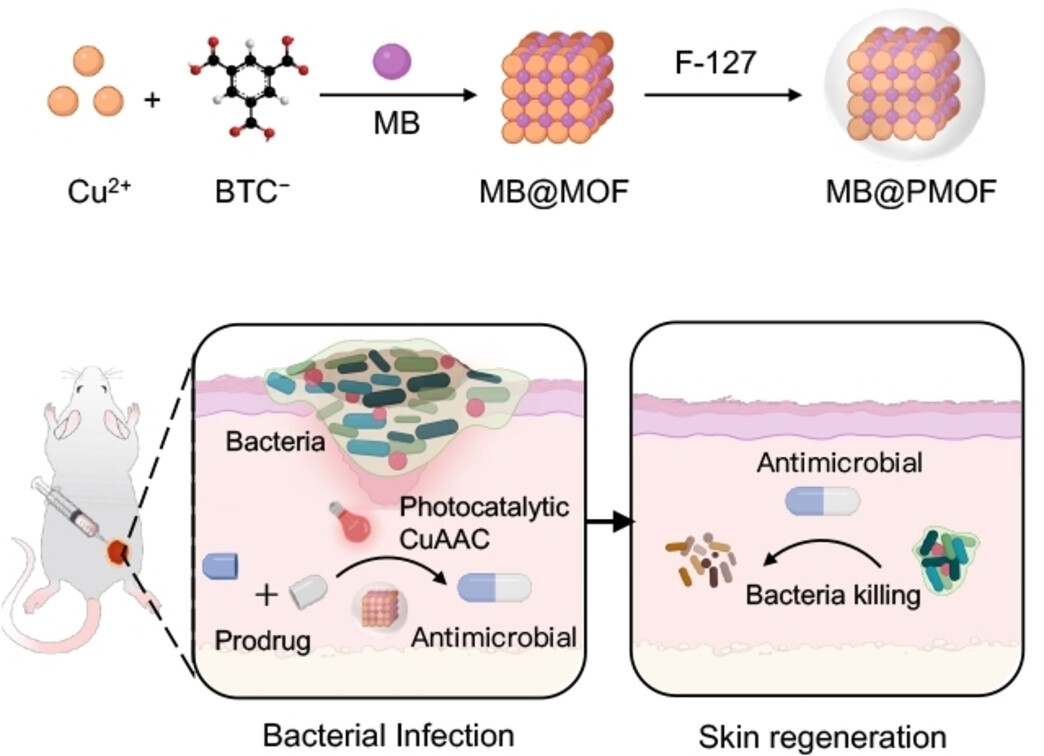
A red light-activated nanocatalyst MB@PMOF has been developed to facilitate in situ synthesis of antimicrobials through a photoredox-catalytic click reaction in bacterial infected tissue. This approach enables precise and potent treatment against severe bacterial infections, providing innovative design concepts for a new generation of alternative antibacterial therapies.
C-H Activation
Sterically Controlled Lewis Acid−Base Interaction Toward para-Selective Borylation of Aromatic Aldimines and Benzylamines
- First Published: 16 July 2024

An efficient method for para selective C−H borylation of aromatic aldimines and benzylamines has been developed using iridium catalysis. While aromatic aldimines participate in a sterically controlled Lewis acid−base interaction where the in situ generated pinacolborane acts as a transient directing group (DG), interestingly the origin of the para selectivity of benzylamines stems from the sterical demand of the N-substituents.
Solid Polymer Electrolytes
Optimizing the Microenvironment in Solid Polymer Electrolytes by Anion Vacancy Coupled with Carbon Dots
- First Published: 15 July 2024
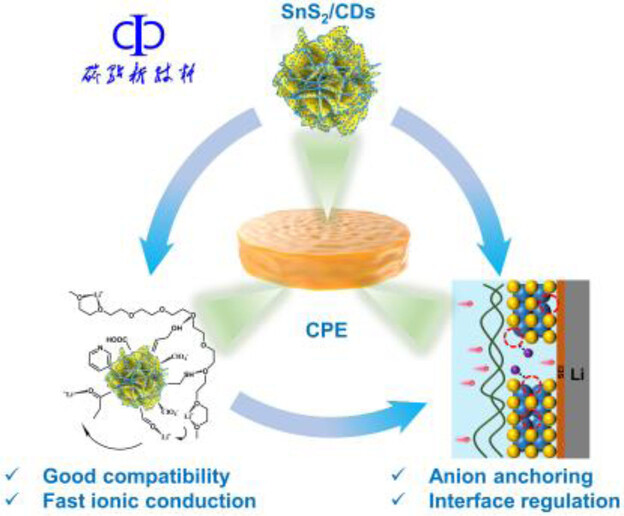
3D flower-like SnS2 composite with abundant sulfur vacancies is synthesized under the regulation of functionalized carbon dots, and it is employed as filler to optimize the microenvironment in solid polymer electrolytes. As a result, the constructed composite electrolyte not only exhibits high room temperature ionic conductivity and Li+ transference number but also demonstrates significantly improved mechanical properties, providing solid state lithium metal batteries with excellent cycling stability and extended cycle life.
Cathode-Electrolyte Interphase
Temperature-Responsive Formation Cycling Enabling LiF-Rich Cathode-Electrolyte Interphase
- First Published: 15 July 2024
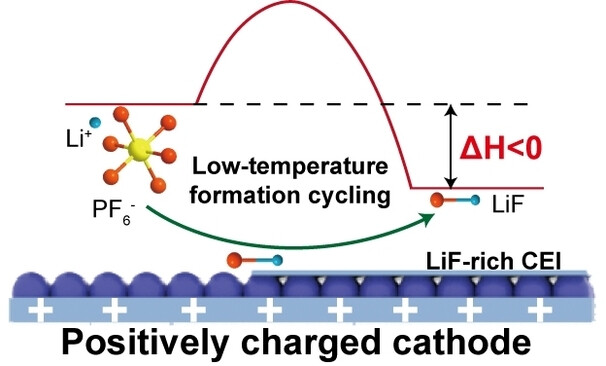
Discover a novel additive-free strategy to create LiF-rich cathode-electrolyte interphase (CEI) through low-temperature formation cycling. Achieving superior battery performance across a wide temperature range, this approach is applicable to various cathode systems, highlighting its versatility and potential for advancing battery technology.
Zinc-Ion Batteries
Lithiation Induced Hetero-Superlattice Zn/ZnLi as Stable Anode for Aqueous Zinc-Ion Batteries
- First Published: 10 July 2024
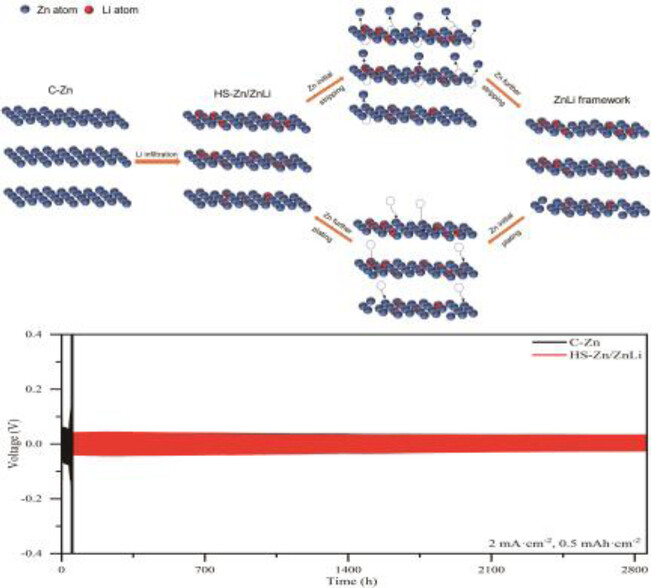
A hetero-superlattice Zn/ZnLi anode containing periodic arrangements of metallic Zn phase and zincophilic ZnLi phase at the nanoscale, is well designed and fabricated via electrochemical lithiation method. The HS−Zn/ZnLi anode can effectively guide Zn ion stripping/deposition evenly during repeatedly stripping/plating processes. Consequently, the HS−Zn/ZnLi anode with hetero-superlattice structure can cycle over 2800 h without a short-circuit at 2 mA cm−2.
P-stereogenic Compounds
Solvent-Controlled Enantiodivergent Construction of P(V)-Stereogenic Molecules via Palladium-Catalyzed Annulation of Prochiral N-Aryl Phosphonamides with Aromatic Iodides
- First Published: 09 July 2024

A new strategy for enantiodivergent accessing P(V)-stereogenic molecules via palladium/norbornene cooperative catalysis was established. The enantioselectivity of this protocol was tuned by the polarity of the solvent, thus providing both enantiomers of the P(V)-stereogenic molecules using a single chiral norbornene catalyst.
Lithium Metal Batteries
Covalent Triazine Based Frameworks with Donor-Donor-π-Acceptor Structures for Dendrite-Free Lithium Metal Batteries
- First Published: 17 July 2024
Intermetallic Alloys
Non-Classical Deactivation Mechanism in a Supported Intermetallic Catalyst for Propane Dehydrogenation
- First Published: 10 July 2024
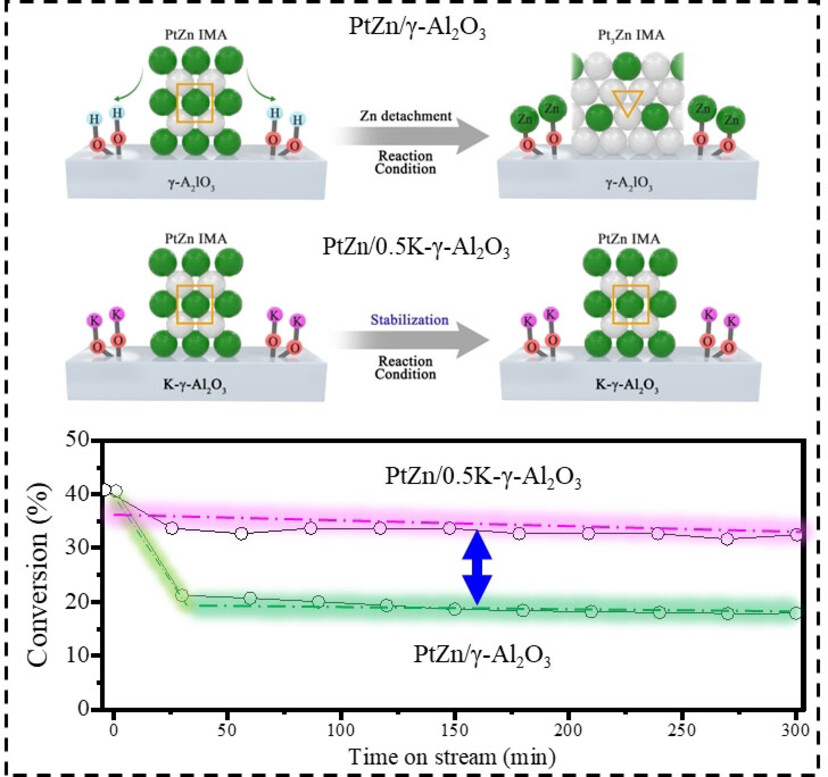
We found that deactivation of the PtZn/γ-Al2O3 catalyst occurred due to reconstruction from PtZn IMA to Pt3Zn IMA. This deactivation mechanism differs from traditional coke deposition and sintering, as it is driven by the metal support interaction (MSI). Further investigation revealed that surface modification of alumina, such as with K ions, effectively inhibits the reconstruction of PtZn IMA, thereby enhancing the stability of propane dehydrogenation.
N Heterocycles
Interception and Synthetic Application of Diradical and Diene Forms of Dual-Nature Azabicyclic o-Quinodimethanes Generated by 6π-Azaelectrocyclization
- First Published: 18 July 2024
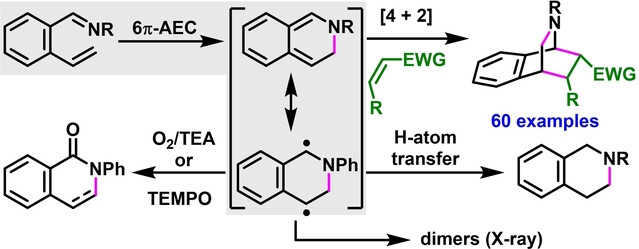
2-Alkenylarylimines have been shown to undergo 6π-azaelectrocyclization thermally to generate azabicyclic o-quinodimethanes. These o-quinodimethanes show dual nature as a cyclic diene and a benzylic diradical. The interception of the diradicaloid o-quinodimethanes by H-atom transfer enabled the synthesis of five tetrahydroisoquinoline alkaloids. The cyclic dienes were intercepted by [4+2] cycloaddition to generate bridgehead azabicycles.
Nanographene
The Effects of Pore Defects in π-Extended Pentadecabenzo[9]helicene
- First Published: 19 July 2024
![The Effects of Pore Defects in π-Extended Pentadecabenzo[9]helicene](/cms/asset/3d939202-ad68-49b2-8fc9-1dbb7f4a755c/ange202409713-toc-0001-m.jpg)
A bottom-up synthesis strategy was used to introduce pore defects into the fully conjugated π-extended helicene. This modification transformed the helicene with original aggregation-caused quenching (ACQ) characteristics into a series of novel helicenes with dual-state emission (DSE) and circularly polarized luminescence (CPL) properties. Consequently, the application range of the helicene in chiral luminescent materials was expanded.
Polycyclic Aromatics
Perylene with Split-Azulene Embedding
- First Published: 10 July 2024
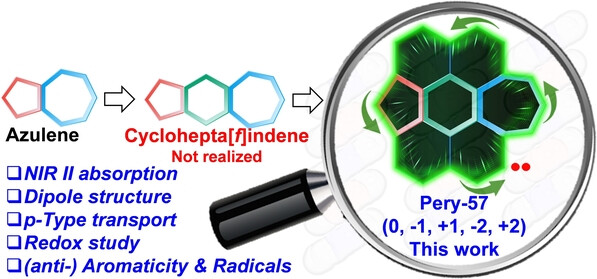
Polycyclic aromatic hydrocarbons (PAHs) with split azulene embedment remain experimentally rare, despite their exceptional properties. Herein, Pery-57 with split azulene is synthesized and exhibits remarkable characteristics like NIR II absorption, p-type transport, and outstanding redox features like diradical character, global antiaromaticity, hydrogen capture. This work stimulates new interest in azulene-like nonalternant PAHs.
Zeolites | Hot Paper
Boosting the Stability of Subnanometer Pt Catalysts by the Presence of Framework Indium(III) Sites in Zeolite
- First Published: 03 September 2024
Electrocatalysis
MOF-on-MOF Heterostructured Electrocatalysts for Efficient Nitrate Reduction to Ammonia
- First Published: 22 July 2024
Photocatalysis | Hot Paper
Green Solvent γ-Valerolactone (GVL) Facilitates Photocatalytic C−H Bond Activation
- First Published: 18 July 2024

A novel green solvent, γ-valerolactone (GVL), efficiently facilitates the photocatalytic activation of C−H bonds in benzylic compounds. Mechanistic studies reveal that GVL′s high dielectric constant (ϵ) increases the driving force (−ΔG), and its large refractive index (n) reduces reorganization energy (λ), collectively reducing the reaction barrier (ΔG≠). This research advances the overlooked solvent effects in semiconductor photocatalysis.
Metal Halide Perovskite | Hot Paper
Simultaneous Defect Passivation and Co-Catalyst Engineering Leads to Superior Photocatalytic Hydrogen Evolution on Metal Halide Perovskites
- First Published: 19 July 2024
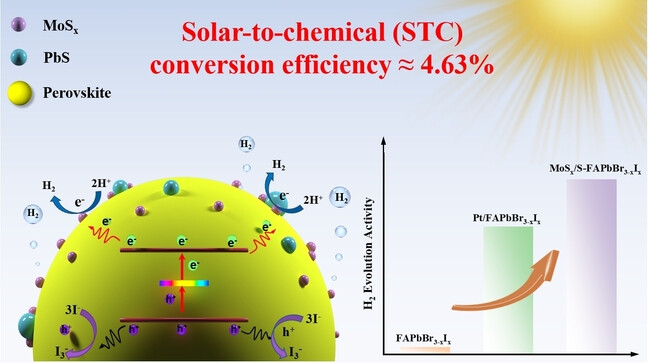
Metal halide perovskites (MHPs) photocatalysts are bi-functionalized with lead sulfide (PbS) and amorphous molybdenum sulfide (MoSx) co-catalysts on the surface. PbS can passivates the defects of MHPs and MoSx provides active sites for hydrogen evolution reaction (HER), thus synergistically enhancing the charge transport efficiency and HER catalysis and achieving a superior solar-to-chemical (STC) energy conversion efficiency of 4.63 %.
Zinc-Ion Batteries
Tailoring the Whole Deposition Process from Hydrated Zn2+ to Zn0 for Stable and Reversible Zn Anode
- First Published: 21 July 2024
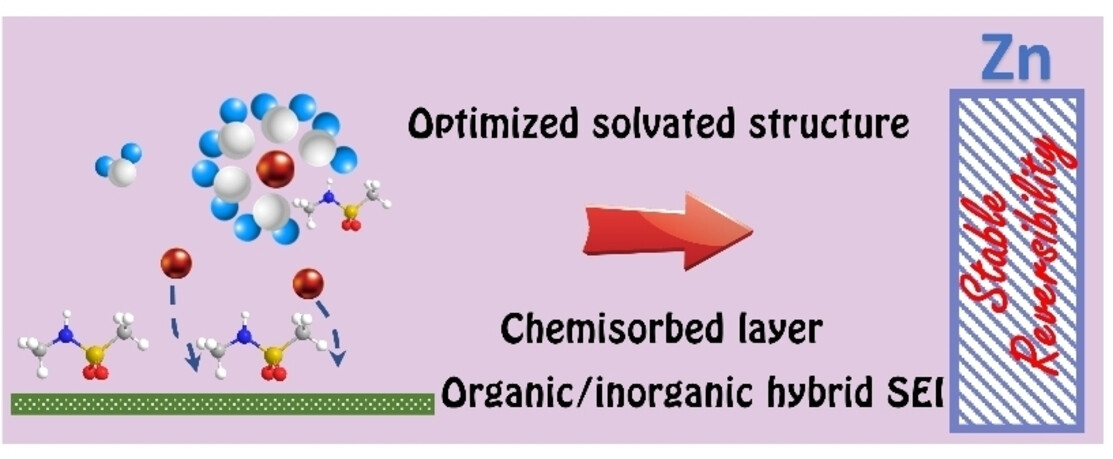
An N-Methylmethanesulfonamide (NMS) additive is introduced to alter the primary solvent shell of Zn2+, chemically adsorb on the metallic Zn surface, and in situ form an N-rich organic and inorganic (ZnS and ZnCO3) hybrid SEI. These effects suppress the water-induced side reactions and ensure the fast transport kinetic and uniform Zn deposition.
Organic Semiconductors
A Dibenzo[g,p]chrysene-Based Organic Semiconductor with Small Exciton Binding Energy via Molecular Aggregation
- First Published: 12 July 2024
![A Dibenzo[g,p]chrysene-Based Organic Semiconductor with Small Exciton Binding Energy via Molecular Aggregation](/cms/asset/89723d73-b000-45e4-87e9-baf9bf0a6011/ange202409964-toc-0001-m.jpg)
Exciton binding energy (Eb) is recognized as a key physical parameter for efficient charge-carrier generation in opto-electronic devices and organic photocatalysts (OPCs). The correlation between Eb and aggregation is important to achieve a small level of Eb in the solid state. Here, the influence of aggregation behavior on Eb and device/OPC functions were revealed by using two organic semiconductors with different aggregation behaviors.
Radiosensibilisatoren | Very Important Paper
Dissoziative Elektronenanlagerungsdynamik eines vielversprechenden Krebsmedikaments zeigt sein Potential als Radiosensitizer
- First Published: 09 July 2024
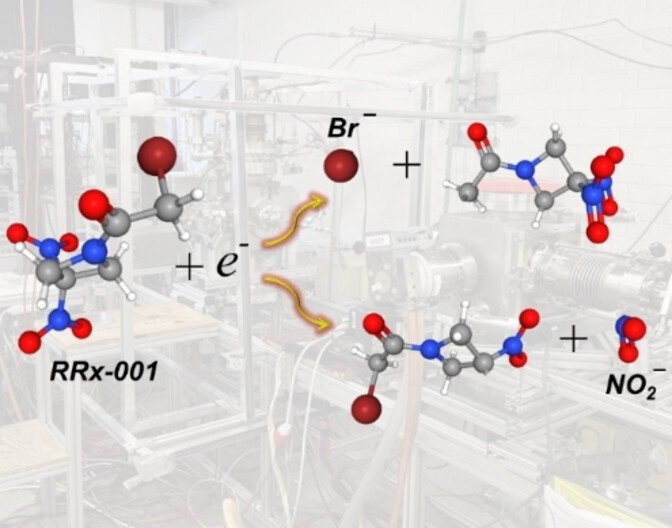
2-Bromo-1-(3,3-dinitroazetidin-1-yl)ethan-1-on (RRx-001) wurde als potentieller Radiosensitizer vorgeschlagen. In dieser Studie untersuchten wir den Zerfall des Moleküls bei Elektronenanlagerung. Die Hauptdissoziationswege des Anions beinhalten eine Freisetzung des Bromatoms oder der NO2 Gruppe, die um das eingefangene Elektron konkurrieren. Die beobachteten schnellen Reaktionsvorgänge bieten einen alternativen Weg zur Sauerstoffanreicherung von sauerstoffarmen Tumoren an.
NH3 Oxidation | Hot Paper
Gasdiffusionselektroden für die Elektrokatalytische Oxidation von Gasförmigem Ammoniak: Das Überqueren des Thermodynamischen Tals der Stickstoffdreifachbindung
- First Published: 23 June 2024
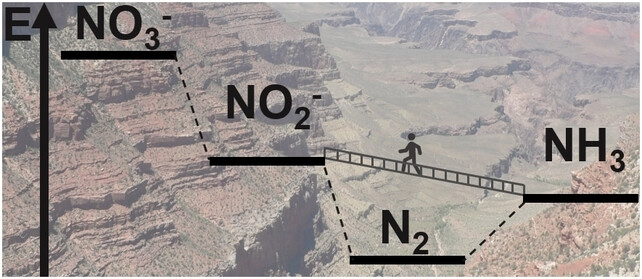
Ammoniak ist ein vielversprechender Wasserstoffträger. Die Ammoniak-Oxidationsreaktion (AmOR) wurde durch direkte Nutzung von gasförmigem NH3 an Gasdiffusionselektroden untersucht. Die selektivste Katalysatorzusammensetzung der verschiedenen Multimetallkatalysatoren war in der Lage, NH3 hauptsächlich zu NO2− zu oxidieren und dabei die Bildung von energetisch günstigem N2 sowie O2 weitgehend zu vermeiden, während an der Kathode ausschließlich H2 gebildet wurde.
Elektrochemie
Elektrochemische Gerüst-Editierung von Indolen durch Stickstoffatom-Insertion mit nachhaltiger Sauerstoff-Reduktionsreaktion
- First Published: 03 July 2024
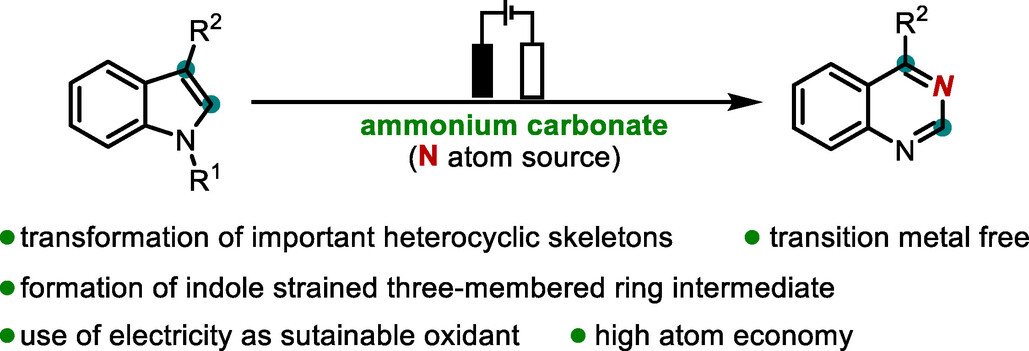
Die direkte Editierung des heterozyklischen Gerüsts pharmazeutischer Leitstrukturen erfordert in der Regel überstöchiometrische Mengen kostspieliger hypervalenter Iod(III)-Reagenzien. Wir berichten hier über die elektrochemische Stickstoffinsertion in Indole, die durch die Sauerstoff-Reduktionsreaktion (ORR) ermöglicht wird. Dies führt zur Bildung von biologisch aktiven Chinazolinen.
Synthetische Methoden
Fluorierte Dialkyl Chloronium Salze: Synthese und Reaktivität für CH2CF3-Übertragungs- und Hydridabstraktions-Reaktionen
- First Published: 16 July 2024
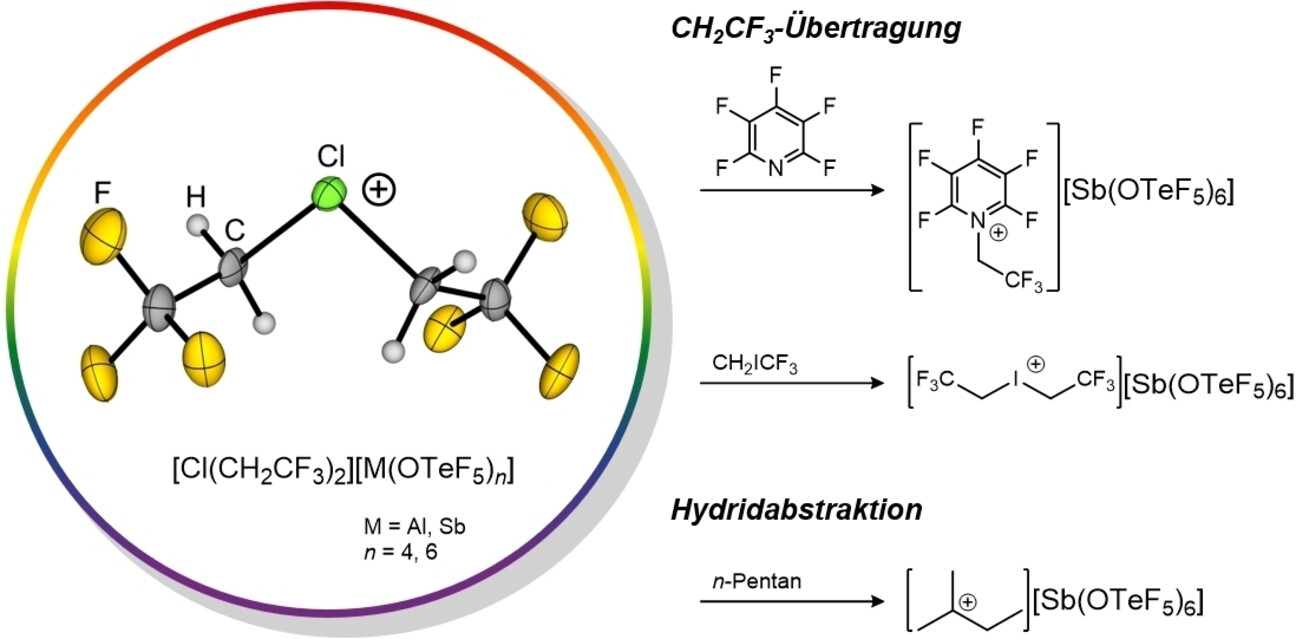
Wir berichten über die Synthese hoch elektrophiler fluorierter Dialkylchloroniumsalze [Cl(CH2CF3)2][M(OTeF5)n] (M=Sb, n=6; M=Al, n=4), die in der Lage sind, schwache Nucleophile zu alkylieren, während ihre hohe Affinität zu Hydridionen die Aktivierung linearer Alkane ermöglicht, was zur Bildung verzweigter Carbokationen führt.
Zuschrift
Inorganic Chemistry
Bismuth as a Z-Type Ligand: an Unsupported Pt−Bi Donor-Acceptor Interaction and its Umpolung by Reaction with H2
- First Published: 11 July 2024

The bismuth cation [BiMe2(SbF6)] reacts with [Pt(PCy3)2] to give heterobimetallic [(PCy3)2Pt→BiMe2(SbF6)] (1). Compound 1 and related species show the first unsupported M→Bi donor–acceptor interactions (M=transition metal), establishing [BiMe2]+ as an effective and robust Z-type ligand, and experience pronounced spin-orbit coupling. 1 activates H2, triggering a sequence of reactions that furnish the umpolung of Pt→Bi to Bi→Pt dative bonding.
Polycyclic Aromatic Hydrocarbons | Hot Paper
Unlocking the Multistage Redox Property of Graphenic Radicals by π-Extension
- First Published: 12 July 2024
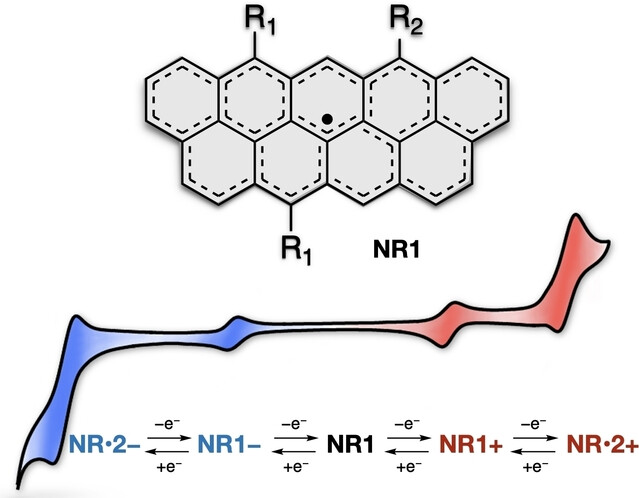
A stable π-extended nanographene radical (NR1) is synthesized and isolated in the crystalline form. NR1 exhibits a distinctive four-stage amphoteric redox behavior, demonstrating that π-extension could serve as a viable approach to unlock the multistage redox ability of delocalized organic radicals.
Proton Transfer
Strong Enhancement in Cobalt(II)-TPMA Aqueous Hydrogen Photosynthesis through Intramolecular Proton Relay
- First Published: 15 July 2024
Catalysis Kinetic Analysis | Very Important Paper
Quantitative Kinetic Insights from Operando-UV/Vis Spectroscopy: An Application to NH3−SCR of NOx on Cu-CHA Catalysts
- First Published: 03 June 2024
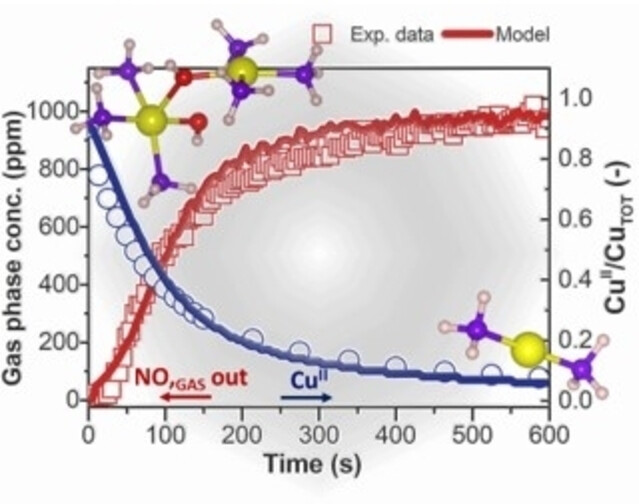
UV/Vis spectroscopy is coupled with a packed bed flow reactor to extract quantitative kinetic data, simultaneously monitoring both the catalyst redox state and the gas-phase dynamics during the Selective Catalytic Reduction of NOx with NH3 over Cu-CHA. This work highlights the accessibility of kinetic studies directly from operando UV/Vis spectroscopy paving the way for elucidating the structure–activity relation under kinetically relevant conditions.
Photocatalysis | Hot Paper
Synthesis of a Gold–Silver Alloy Nanocluster within a Ring-Shaped Polyoxometalate and Its Photocatalytic Property
- First Published: 10 July 2024

Polyoxometalates (POMs) can serve as an effective stabilizing ligand for metal nanoclusters to impart distinctive structures and properties. We report the synthesis of a surface-exposed Au−Ag alloy nanocluster within a ring-shaped POM through reaction of an Ag nanocluster with Au ions (Au+). The resulting Au−Ag alloy nanocluster demonstrated remarkably enhanced visible-light-responsive photocatalytic activity in the aerobic oxidation reactions and stability compared to the parent Ag nanocluster.
Electroenzymatic Synthesis | Hot Paper
Formate-Mediated Electroenzymatic Synthesis via Biological Cofactor NADH
- First Published: 22 July 2024
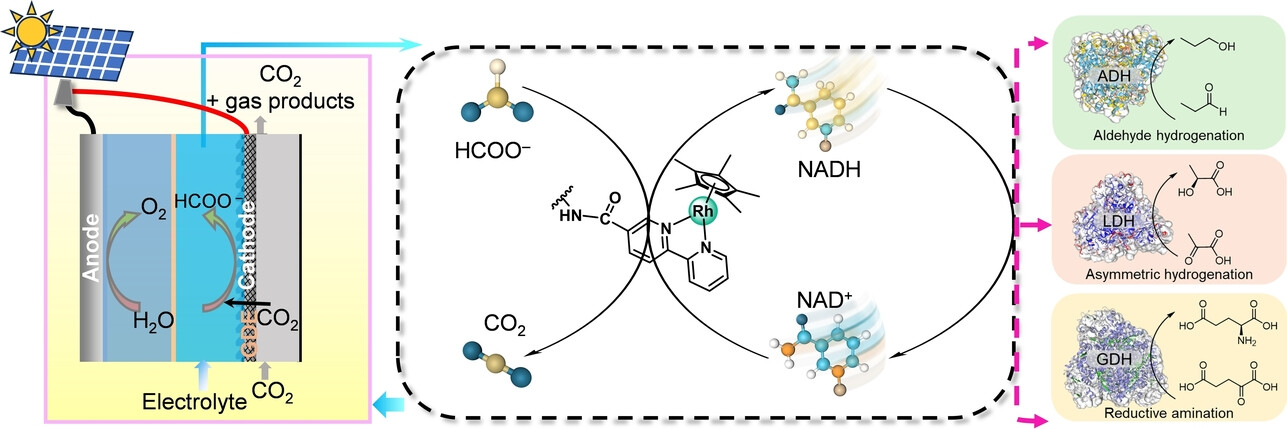
An electroenzyme-coupled system has been constructed for continuous biosynthesis of valuable chemicals with high production rates and turnover frequencies. In the system, formate is obtained from electroreduction of CO2 with good faradic efficiency at high current density and utilized for NADH regeneration with high selectivity. As a temporary energy carrier, formate ensures efficient energy transfer from electricity to chemical production.
Photoelectrochemistry
Customized Photoelectrochemical C−N and C−P Bond Formation Enabled by Tailored Deposition on Photoanodes
- First Published: 17 July 2024
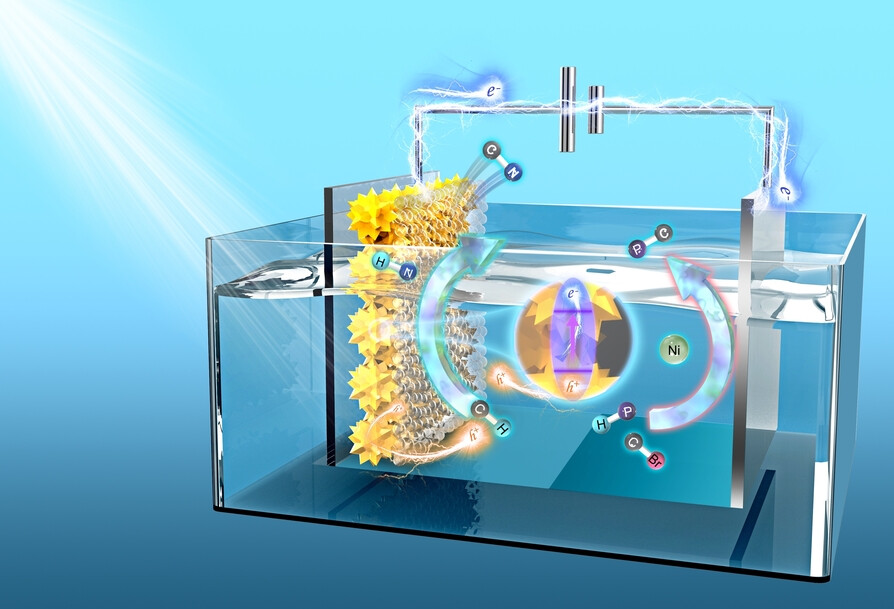
With customized designs of the deposition layer on the BiVO4 photoanode, two PEC systems were developed for highly efficient catalytic C−N and C−P bond formation. The modified BiVO4@Al2O3 demonstrated substantial performances for important yet challenging coupling between amides and xanthenes under aerobic conditions, whereas BiVO4@Ni1Co7Pi manifested its versatility in C−P coupling between aryl bromides and diphenylphosphine oxide, facilitated by a Ni-catalyzed cycle under ultralow potentials.
Carbene Chemistry
A [2.2]Isoindolinophanyl-Based Carbene (iPC) Ligand: Synthesis, Electronic and Photophysical Properties, and Application in Photocatalysis
- First Published: 04 July 2024
![A [2.2]Isoindolinophanyl-Based Carbene (iPC) Ligand: Synthesis, Electronic and Photophysical Properties, and Application in Photocatalysis**](/cms/asset/f6e3a588-bda6-429e-ae0d-eaeb96d4a02b/ange202409115-toc-0001-m.jpg)
A sterically demanding, electrophilic [2.2]isoindolinophanyl-based carbene (iPC) acts as a potent π-chromophore and participates in metal-to-ligand charge-transfer (CT) transitions in [RhCl(CO)2(iPC)] and intra-ligand-“through-space”-CT transitions in [Au(iPC)2]OTf (5). The steric demand of the iPC leads to ultralong-lived green phosphorescence (τ=185 μs) of 5 in solution, which in combination with the large accessible π surface area has been exploited for energy transfer (EnT) photocatalysis.
Total Synthesis | Very Important Paper
Total Synthesis of (±)-Baphicacanthcusine A Enabled by Sequential Ring Contractions
- First Published: 12 July 2024

An oxidative ring contraction strategy was employed to accomplish the first total synthesis of baphicacanthcusine A. Rapid construction of a key seven-membered-ring intermediate set the stage for a series of diastereoselective oxidations to access the skeleton of the natural product. Selective C−H oxidation gave rise to baphicacanthcusine A in 11 steps from 3,3’-biindole.
Fluorescent Probes
Rational Molecular Design of a Fluorescent Probe for Selectively Sensing Human Cytochrome P450 2D6
- First Published: 06 September 2024
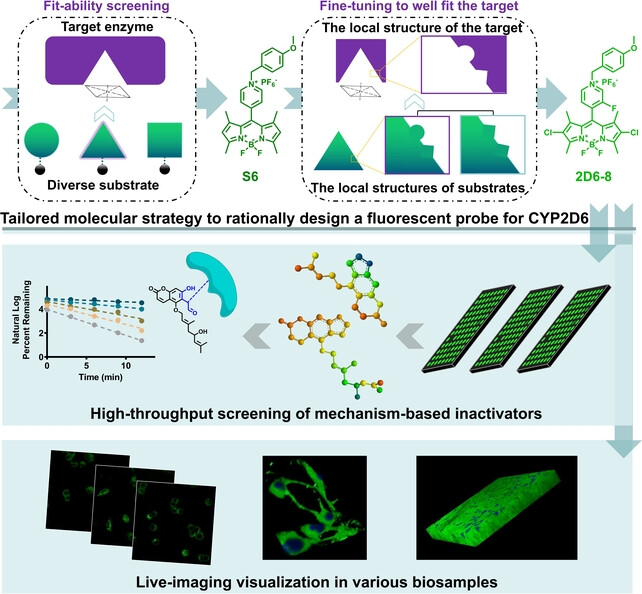
Fluorescent probe for discovering the critical roles of CYP2D6 in natural systems: A fluorescent probe for CYP2D6 is designed using a tailored molecular strategy. The probe quantitatively detects and images CYP2D6 activity in various living systems, thereby providing a robust tool for exploration of the biological functions of CYP2D6 in the pathogenesis of diseases and detailed investigation of CYP2D6-induced MBI.
Chiral Nanomaterials
Bottom-up Synthesis of Highly Chiral 1T Molybdenum Disulfide Nanosheets
- First Published: 12 July 2024
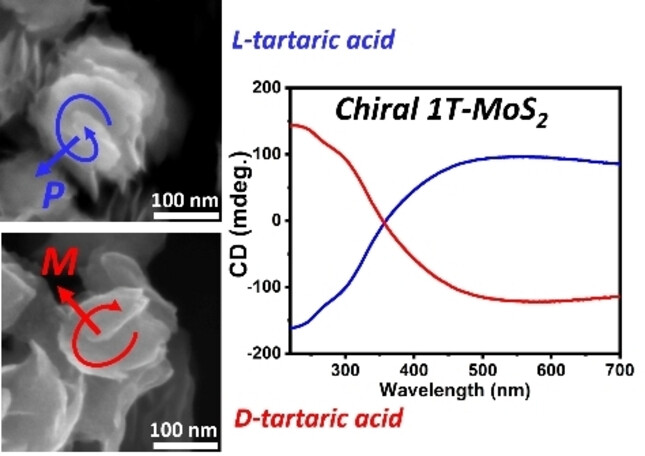
Chiral 1T−MoS2 nanosheets were produced via hydrothermal synthesis in the presence of tartaric acid as a chiral ligand to control mirror symmetry breaking. This novel chiral inorganic nanomaterial exhibits a chiral morphology as well as remarkably high chiroptical activity, with a g-factor of up to 0.01. The optimization of the synthetic conditions and the material's formation mechanism revealed critical details on the transfer of chirality.
Oxidative Stress | Hot Paper
Outstanding Superoxide Dismutase Catalytic Activity Of Simple Peptide-Based Nickel(II) Complexes
- First Published: 16 July 2024
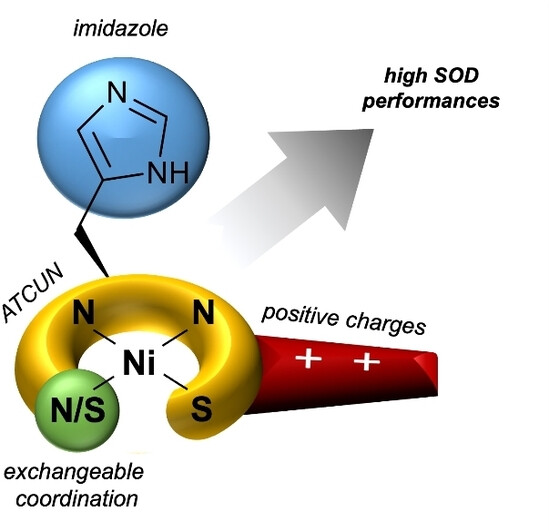
Be positive! A novel Ni superoxide dismutase mimic was engineered, taking advantage of the versatility of the Amino Terminal CuII- and NiII-binding (ATCUN) motif to introduce positive charges around the NiII center. This strategy yielded the most potent synthetic NiSOD mimic reported to date, in terms of catalytic efficacy and stability.
Nanoparticles
Poly(N-Heterocyclic Carbene)-Capped Alloy and Core-Shell AuAg Bimetallic Nanoparticles
- First Published: 18 June 2024
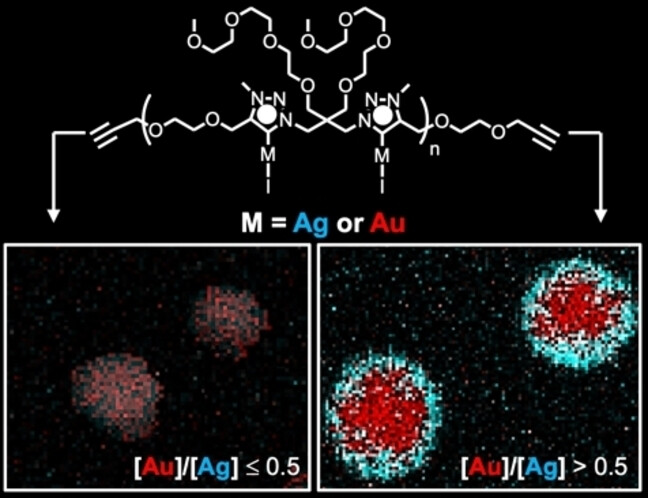
Polymerized N-heterocyclic carbenes (NHC) are used to covalently immobilize Au and Ag atoms to yield bimetallic random copolymers. Reduction of such polymers results in the formation of polyNHC-capped alloy and core–shell AuAg bimetallic nanoparticles whose structures are governed by the relative metal content in their corresponding metallopolymers. The application of these nanomaterials in electrocatalytic oxygen reduction reaction is demonstrated.
Porous Liquids
Using Porous Liquids to Perform Liquid-Liquid Separations
- First Published: 10 July 2024
Synthetic Methods | Hot Paper
A Modified Arbuzov-Michalis Reaction for Selective Alkylation of Nucleophiles
- First Published: 03 July 2024
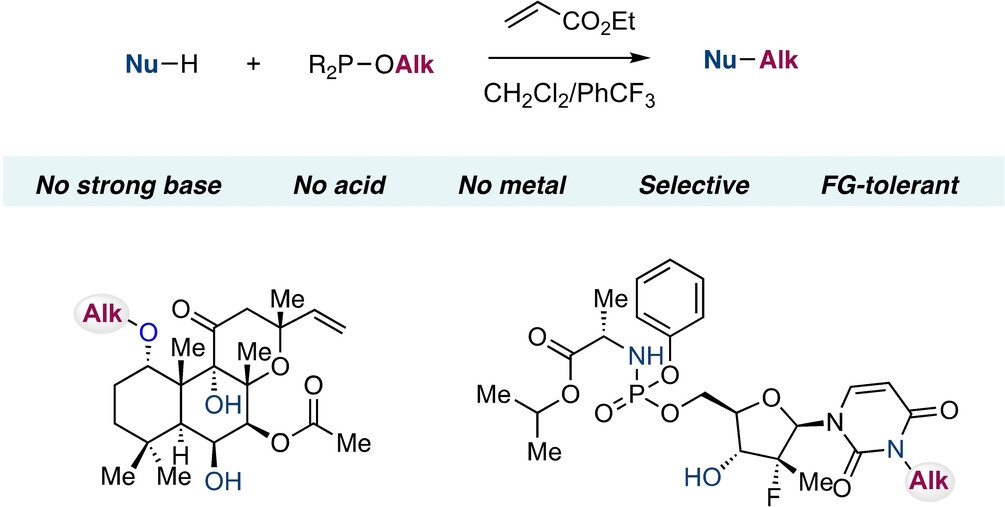
A general and selective alkylation method without using strong acids, bases, or metals is reported. This method, which is mechanistically related to the Arbuzov-Michalis reaction, employes a combination of phosphinites/phosphites and ethyl acrylate as effective alkylating agents, achieving chemo- and site-selective modification of complex natural products and pharmaceutical agents.
Biocatalysis | Hot Paper
Atroposelective Synthesis of Axial Biaryls by Dynamic Kinetic Resolution Using Engineered Imine Reductases
- First Published: 17 July 2024

A highly efficient biocatalytic route for the atroposelective synthesis of biaryls by dynamic kinetic resolution (DKR) was developed. This DKR approach features a transient aza-acetal bridge-promoted racemization followed by an engineered imine reductase (IRED)-catalyzed stereoselective reduction to generate the axial chirality, providing various biaryls in high yield with excellent enantioselectivity (up to >99 : 1 er).
Nanomaterials | Hot Paper
Versatile Dehydration-Assisted Functionalization of Quantum Dots and Rods
- First Published: 19 July 2024
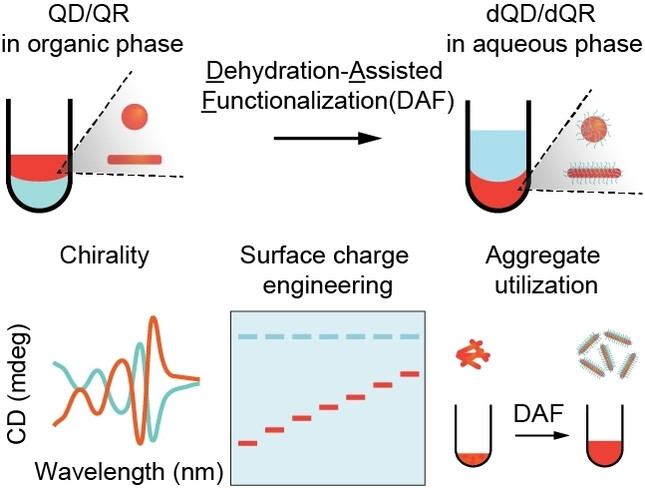
A novel dehydration-assisted functionalization (DAF) enables rapid ligand exchange and dense surface modification of quantum dots (QDs) and quantum rods (QRs). This study highlights DAF's role in preparing chiral QRs, engineering QD surface charge, utilizing QR aggregates, and conjugating DNA onto cadmium-free InP/ZnS QDs. DAF provides a versatile solution for diverse QD and QR functionalization applications.
Magnesium Batteries
Sulfurized Two-Dimensional Conductive Metal–Organic Framework as a High-Performance Cathode Material for Rechargeable Mg Batteries
- First Published: 17 July 2024
Homogene Katalyse | Hot Paper
Kopplung von Arylchloriden mit Lithium-Nukleophilen, an molekular definierten Alkynyllithium-Palladium-Katalysatoren
- First Published: 05 June 2024

Dilithiumtetraalkinylpalladate, die in situ aus Palladiumsalzen und Lithiumalkinylen gebildet werden, fördern effektiv die Kopplung von nicht aktivierten Arylchloriden mit verschiedenen Nukleophilen unter Bildung von C−C- oder C−N-Bindungen. Die Anwendbarkeit des Protokolls wurde durch die Synthese von 49 Molekülen, einschließlich pharmazeutisch relevanter Verbindungen, nachgewiesen. Die Lithiumalkinyle wirken als sehr elektronenreiche Liganden, die unter den basischen Reaktionsbedingungen weitgehend inert zu sein scheinen.




